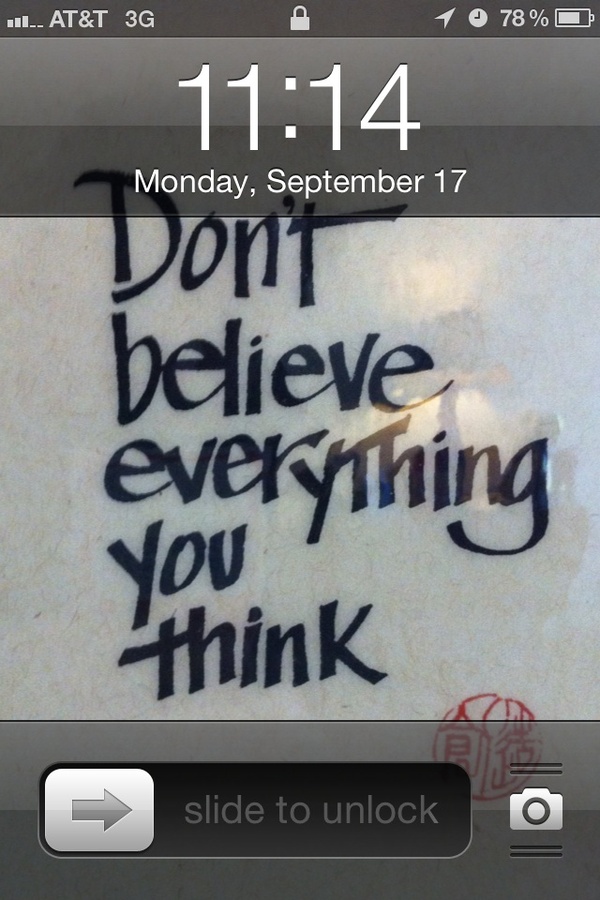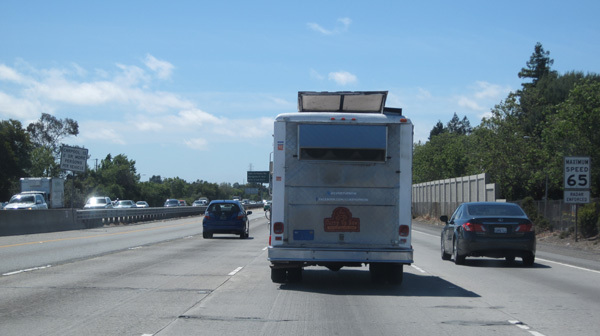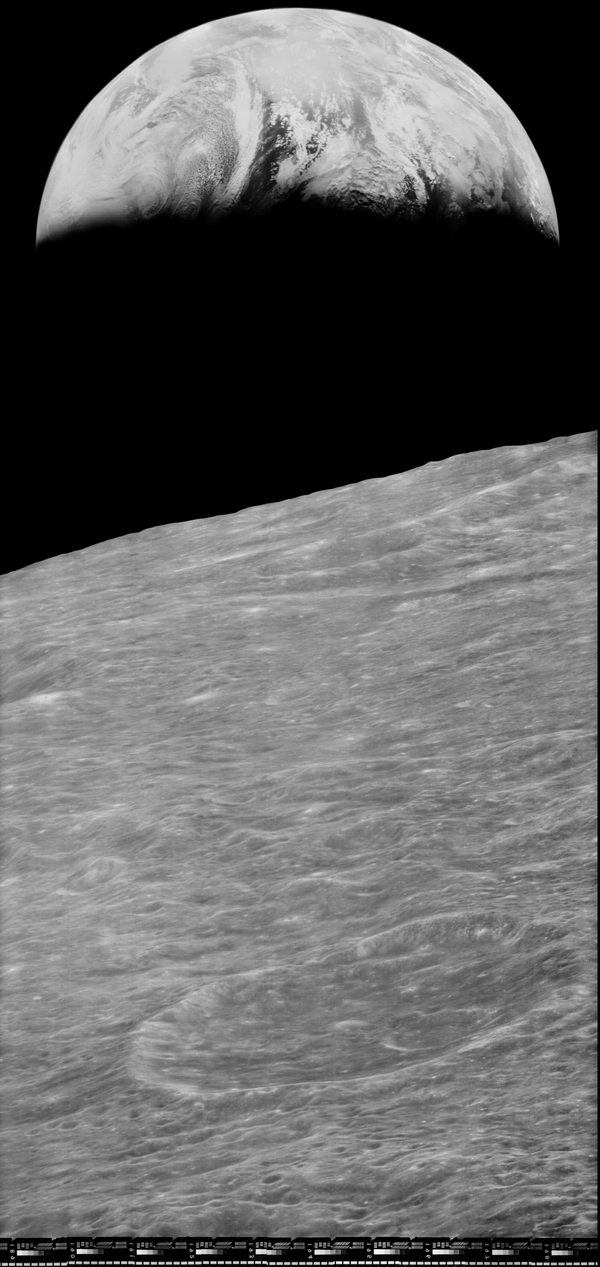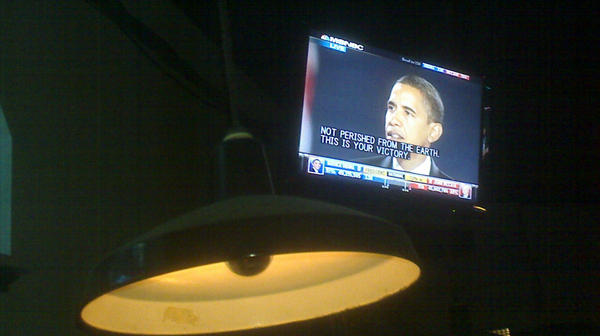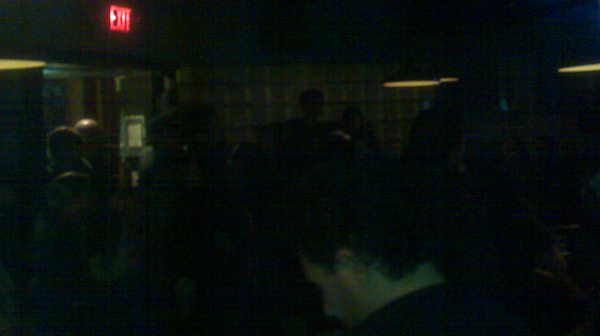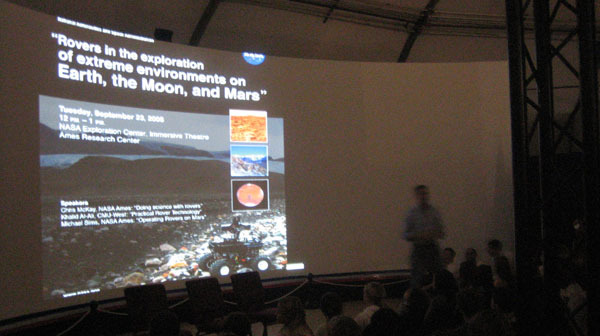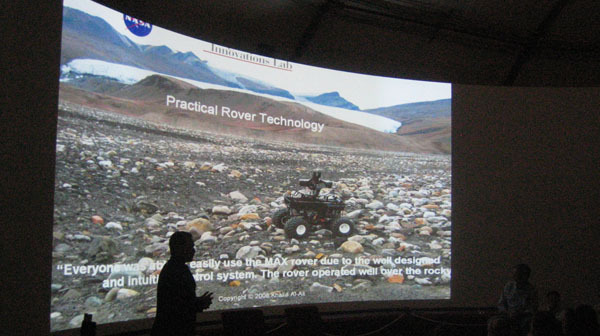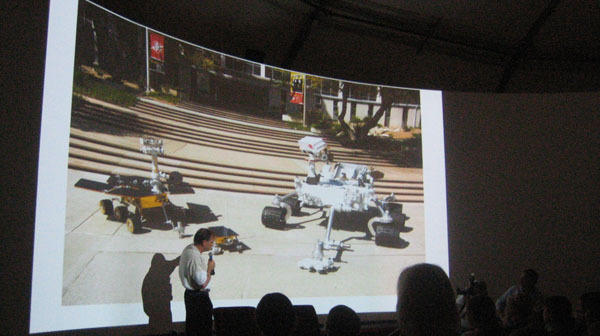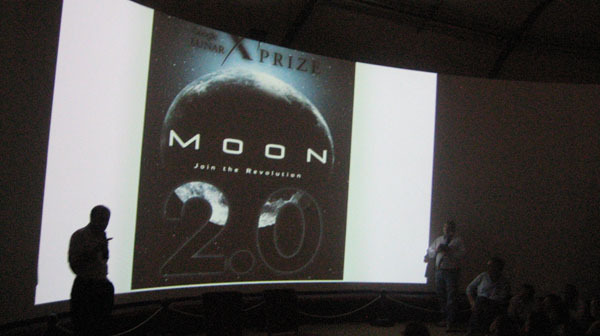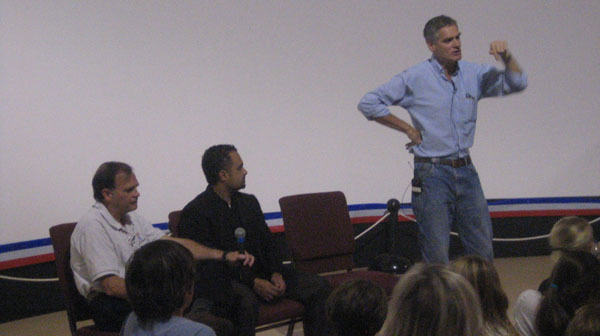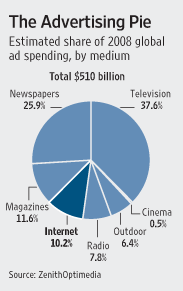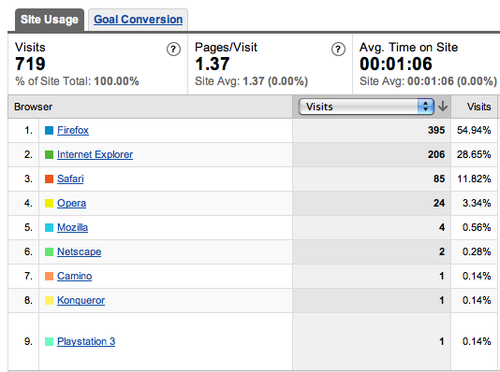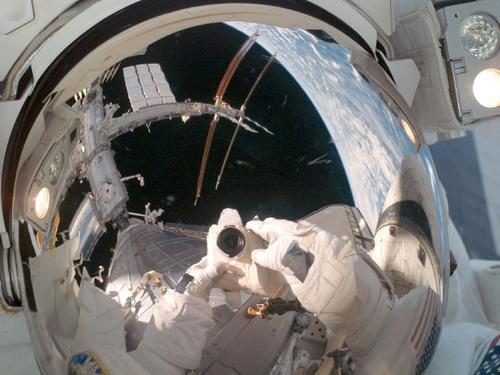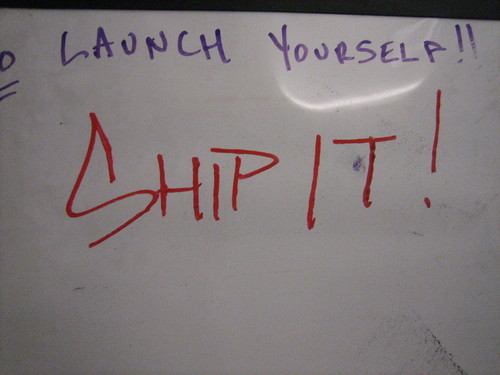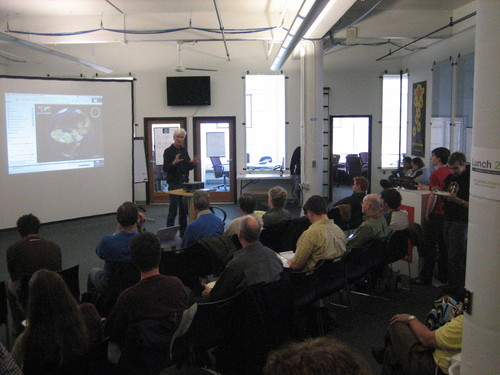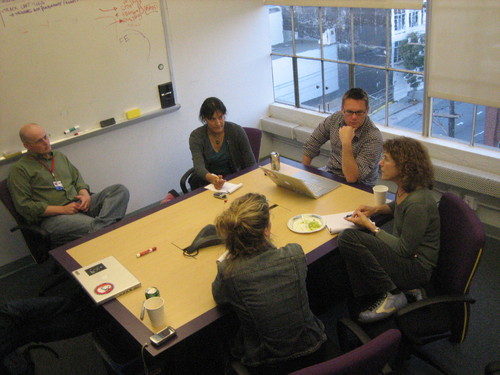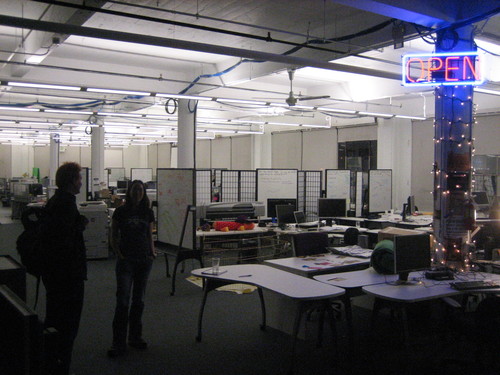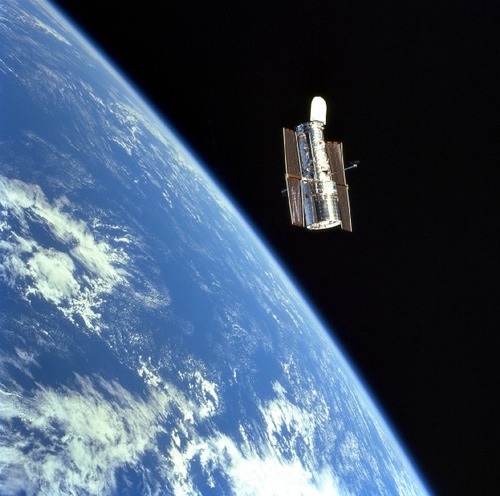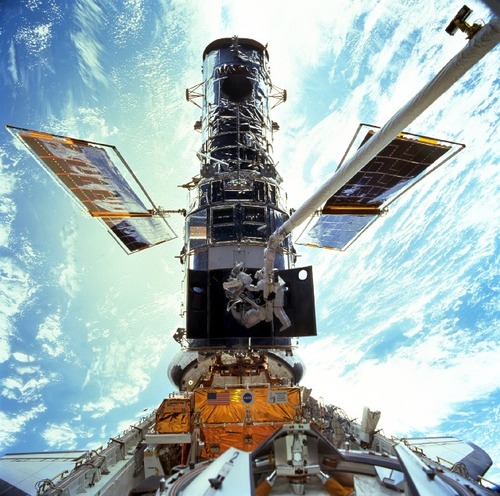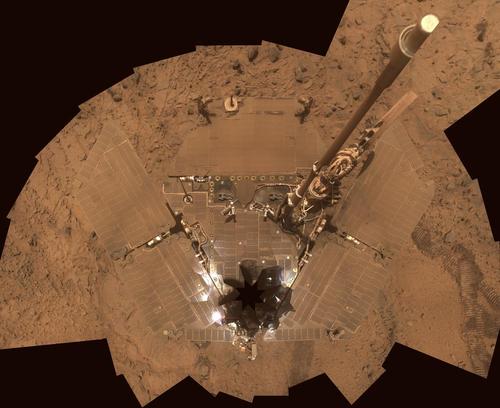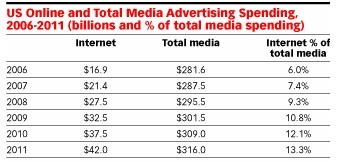This is the marketing archive | Back to Main
tobearchived after 6 years
Posted on Monday, September 17, 2012
After exactly 6 years (first post) its time to archive this blog. I've had a great time keeping a trail of my online journeys over these past 6 years and it served me well in my worldly travels, but its time for a new itinerary. I will keep the content up for the Google but I won't be posting here anymore. If you're interested in staying connected, follow me on Twitter @tobedetermined until I find a new home to share my current and future travels.
Magical Bruce Sterling Keynote on Augmented Reality as Industry
Posted on Friday, August 21, 2009
His keynote at the official Layar Reality Browser launch in Amsterdam. Easily one of the best presentations of this year. Embedded below.
None At This Time
Posted on Tuesday, November 18, 2008
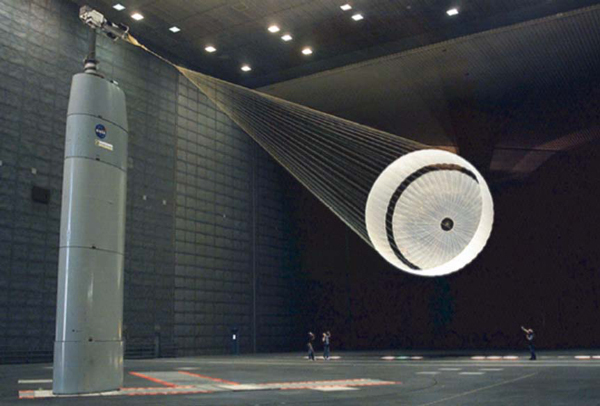
Every large organisation, whether government or private industry, is trying to cope with the changing media landscape around us as a result of the rapidly evolving internet. Enter NASA. Having been an early adapter of the web for its communication to the public and stakeholders, it currently faces a legacy of a widely scattered footprint of websites. Moving forward, the challenge will be to consolidate all the content that's out there, while at the same time building out a new data platform that is agile enough to be able to adapt and evolve into the future (earlier post).
Part of my daytime job at the moment is cleaning up the dead wood on www.nasa.gov/ames (small steps towards the grand vision ;-). Going through the back-end of the system, I run into quite some interesting stuff, like above image (more on that image here) and the best dead page on www.nasa.gov/ames yet: http://www.nasa.gov/centers/ames/pages/pubnot.html
Update: both links are now intentional 404's. For more information on NASA Ames, please go to www.nasa.gov/ames
ESA on Youtube
Posted on Monday, November 17, 2008
More at www.youtube.com/esa (via Sebastian Marcu's message on skype)
Lunar Lander Challenge Video
Posted on Sunday, November 9, 2008
A nice minimalistic beat and distortion of the onboard camera. More on the Lunar Lander Challenge (via).
First Images of the Earth from Chyandrayaan-1
Posted on Monday, November 3, 2008
And quite exquisite ones as well (see earlier post). Click the images for full res. More from the Indian Space Research Organisation (ISRO) at this Press Release from last friday 31st October 2008. More on Chyandrayaan-1 at its own website. (all links via)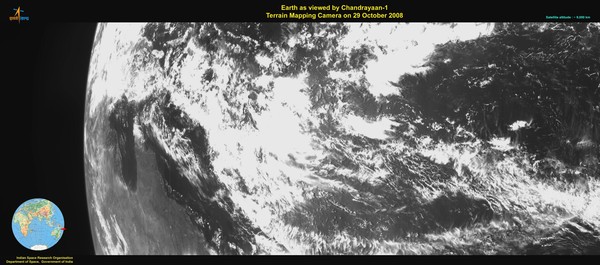
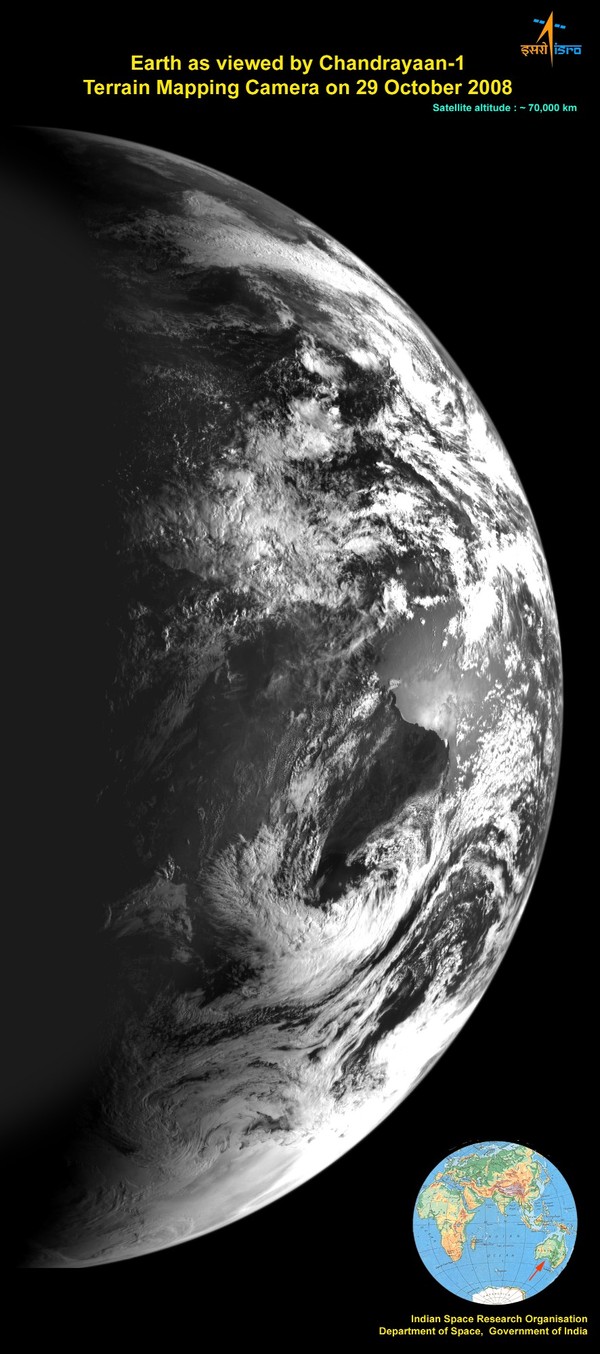
International Committee on the 'Cultural Utilisation of Space' Launched
Posted on Friday, October 17, 2008
Reblogging Arts Catalyst:
The new IAF (International Astronautical Federation) Technical Activities Committee for the Cultural Utilisation of Space (ITACCUS) was announced during the Less Remote symposium. ITACCUS has been set up to promote and facilitate the innovative utilisation of space by the cultural sectors of society internationally. The term 'utilisation' is used often by the space community. In a cultural context, it may include cultural production, cultural preservation, cultural representation, cultural education and cultural development.The launch speakers were ITACCUS co-chairs Roger Malina, Director, L'Observatoire Astronomique Marseille, and Nicola Triscott, Director of The Arts Catalyst, and committee members Ciro Arevelo, Chairman of the United Nations Commitee on the Peaceful Uses of Outer Space, who welcomed the ITACCUS initiative for the contribution that the cultural sector could make to space and society's engagement with it, Mario Hernandez from UNESCO, who explained the work of UNESCO in using space surveillance systems to monitor world heritage sites, Bernard Foing from the European Space Agency and Spanish astronaut Pedro Duque.
ITACCUS will report on its activities online, and will submit a report annually on cultural utilisation of space to the UN Committee on the Peaceful Uses of Outer Space. It is developing a webspace, which will be linked from its page on the IAF website at www.iafastro.com.
Every company is a media company . . .
Posted on Thursday, October 2, 2008
From the Silicon Valley Watcher blog:
I've often spoken about how every company is now a media company and needs to master the new media technologies at our disposal, such as RSS, blogging, Twitter, social media, etc. But being a media company requires a commitment, it is not a "campaign" that runs for a few months and finishes--it is a long term commitment and not everyone understands this aspect and what that means.Seems to tie in with this post over at O'Reilly Radar.I love to remind people that these are fascinating times for professional communicators, whether they are media professionals or PR professionals because there is so much change going on. There are still so many questions about the best use of the new media technologies. What are the best formats, the best practices? And we all get to figure out how this all works, we all have a hand in helping to create the future.
Hello World
Posted on Tuesday, September 30, 2008
I kinda missed the excitement of the Chinese EVA the other day (NYT).
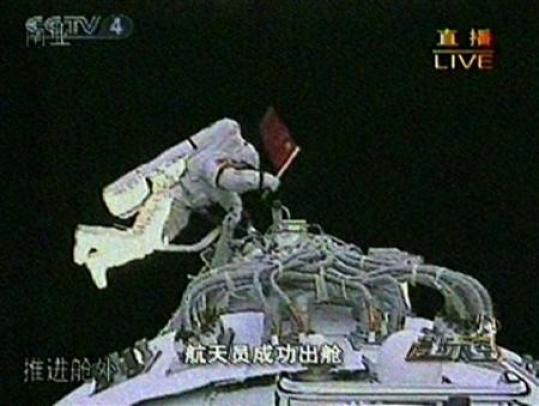

(via & via)
Google's TechTalks Inspire NASA Ames
Posted on Sunday, September 28, 2008
Chris McKay (Planetary Scientist @ NASA Ames), Khalid Al Ali (Director of Research at Carnegie Mellon University (CMU) West), and Michael Sims (Research Scientist @ NASA Ames) came together in the NASA Ames Exploration Center last wednesday to talk about the latest developments in robotic surface exploration. Fascinating talk and photos. From what I hear, an audio(?) recording is forthcoming. I hope we get to see more of these talks down the road (and hopefully also the videos integral on the web, in the same spirit as the above mentioned TechTalks).
10 Bucks Well Spend
Posted on Wednesday, September 24, 2008
Following on from yesterday's syndication of Tim O'Reilly's keynote at the NY Web2.0, I just finished watching the documentary he has been pointing out on several of his keynotes: A Crude Awakening: The Oil Crash. Buy it on itunes from their website and have a peak into the future of post cheap oil society. Quite informative...
Tim O'Reilly's Call to Action
Posted on Tuesday, September 23, 2008
And it ain't throwing sheeps. From last week's Web 2.0 Expo in New York entitled "Web Meets World".
(via)
Your 47 Minutes of Zen
Posted on Wednesday, September 17, 2008
A video from Nova Spivack's panel at DEMO Fall '08 on the Future of the Web, among which former Division Chief of Computational Sciences at NASA Ames (and now head of Research at Google) Peter Norvig (older & excellent mp3 interview with Norvig). All good stuff!
(via)
Yahoo Hackday 2008 (today's pitstop #3)
Posted on Saturday, September 13, 2008
My First Yahoo Hackday. Not much hacking myself, mainly getting a glimpse of Yahoo hackculture at this stage, but Ames was well represented by NASA's Planetary Content hackers Matt Hancher (left) and collegue.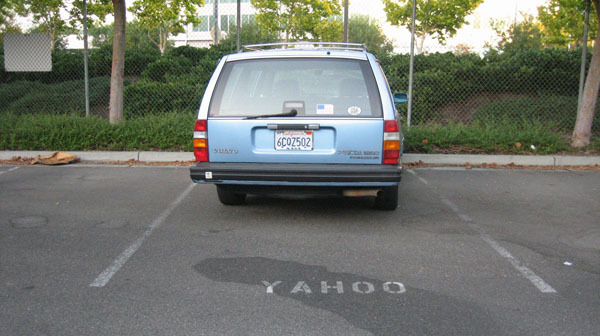
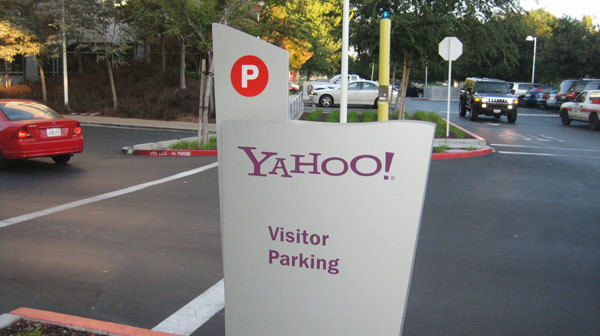
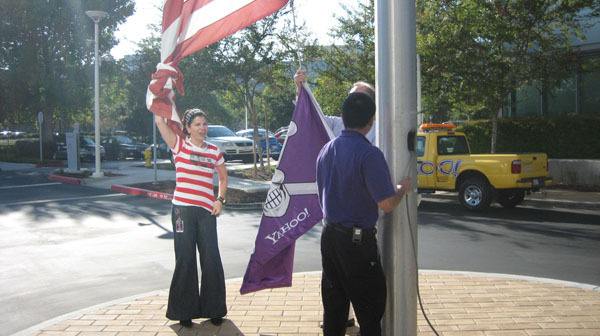

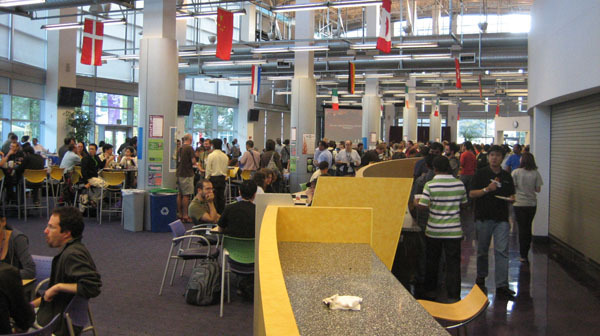
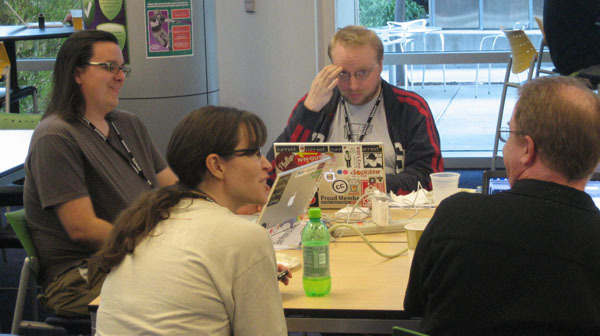
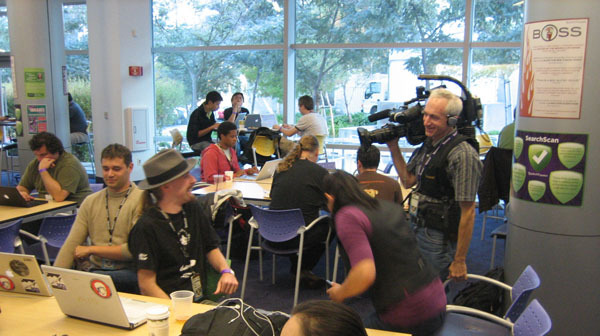
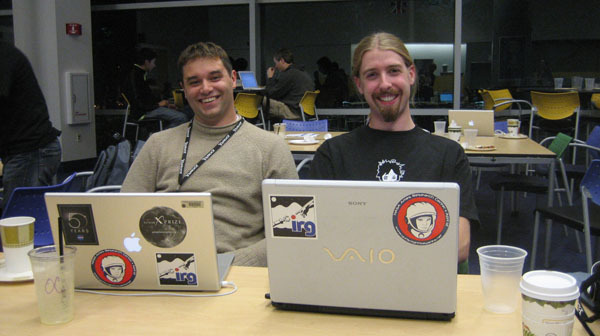
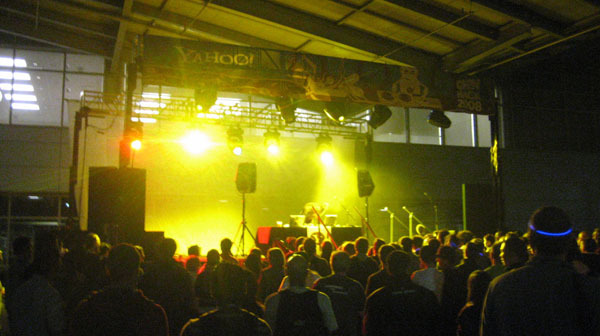
tobedetermined.org Extended Credo
Posted on Monday, September 1, 2008
Update: A post over at O'Reilly Radar by Nat Torkington reminds me of another quote I've used in the earlier days of this blog. It's a (famous) quote from William Gibson: The future is here, its just not evenly distributed yet. In his post, Nat refers to another quote from Gibson that brings the overarching point home:
One of the things our grandchildren will find quaintest about us is that we distinguish the digital from the real, the virtual from the real. In the future, that will become literally impossible. The distinction between cyberspace and that which isn't cyberspace is going to be unimaginable. When I wrote Neuromancer in 1984, cyberspace already existed for some people, but they didn't spend all their time there. So cyberspace was there, and we were here. Now cyberspace is here for a lot of us, and there has become any state of relative nonconnectivity. There is where they don't have Wi-Fi.
Having a 3-day weekend does have its benefits (like in: having an extra evening behind your computer?). Think I just stumbled upon something like an extended credo for this blog (beyond tobedetermined.org: A blog about outer space, cyberspace, their common future and all that is leading up to it... ). I started gathering some quotes that resonated with me over the years and ended up with this list (read from top to bottom, in that order):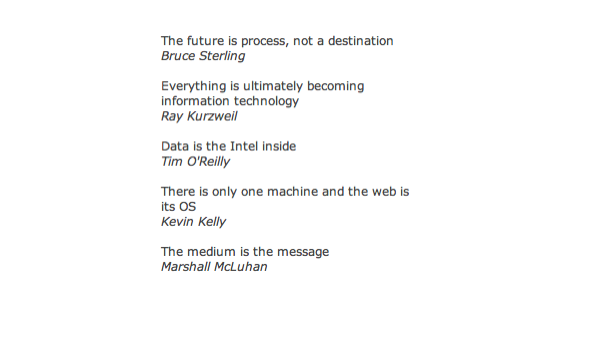
I am sure there are more out there that would fit this list, so if you have any suggestions pls let me know.
ESA runs a webcam...around Mars
Posted on Sunday, August 31, 2008
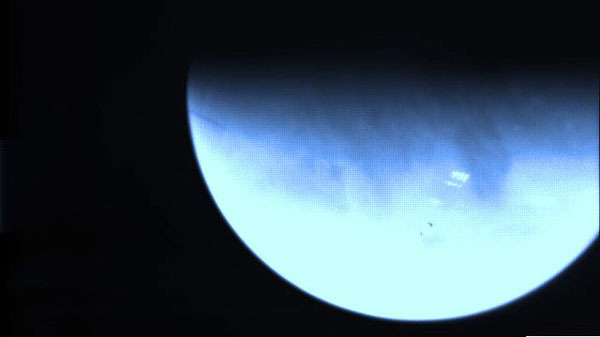
And they invite the public to participate in processing the images. See for more @ ESA's VMC website. Nice job by VMC team coordinator Thomas Ormston, Mars Express Spacecraft Operations Engineer.
The Economist on Space
Posted on Thursday, August 21, 2008
Since reading the excellent 'Nasa at 50' in the Economist earlier this summer, I am considering them a valuable voice in the (online) space debate, so I am glad to see 3 new space articles in the 21st August edition (via):
Auw! Everything that can go wrong, will go wrong...
Posted on Wednesday, August 20, 2008
But hey, that's what tests are for. Glad to see NASA releases this stuff, although it does take some convincing from certain individuals.
War on Terror The Sequel
Posted on Tuesday, August 19, 2008
My brother works in the advertisement business back in Amsterdam. Yesterday he send me below "movie trailer" he recently made for the H20 film festival. Lip sync isn't brilliant, but the storyline soon takes over. Which reminds me that I've been watching a lot of 'Der Untergang' spoofs lately, like this TechCrunch one. As an aside, yesterday I saw this 'hot-of-the-Siggraph-press' video of Microsoft Research into new video editing techniques.
MIT on the web
Posted on Friday, August 15, 2008
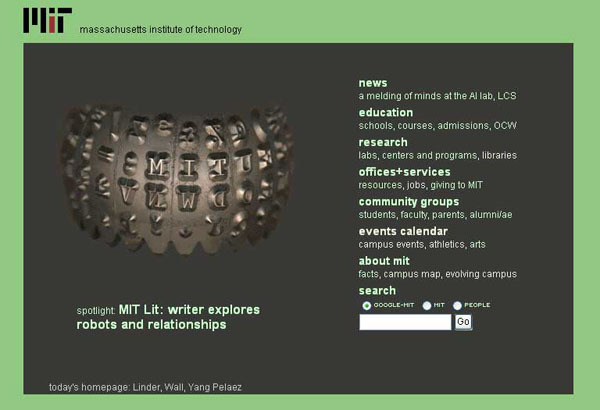
Doing some Friday afternoon web-wondering, i stumble across the MIT web, reading about a mission called TESS that is being developed between MIT, NASA Ames and some other partners. Diving a little deeper into the MIT web, I come across a feature I've been wanting to implement on the NASA homepage, i.e. a changing background image. In the case of MIT, its a background image that can even be proposed by the entire MIT community.They also have something called MIT TechTV, reminiscent of Google's invaluable TechTalks. Overall, MIT's web presence is pretty elegant, lightweight (wow, how nice and oldschool html-isch), transparent and inviting. Good reference material while thinking about revamping NASA Ames website.
Summer 2008
Posted on Friday, August 1, 2008
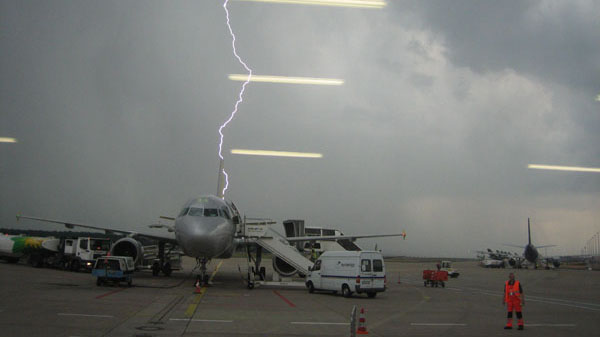
Back from a week of Internetless holiday on the island of Korcula (above photo was at Koln airport just before we were told we could board the plane ;-). Catching up here are a few relevant tidbits:
- The Economist's commentary on NASA's 50th anniversary provides a sharp dissection of NASA's past, present and future. Its the most sensible story on space and NASA I've read in a long while. As always, the comments are worth reading too, if only to see how space proponents bring their arguments into gear to downplay the article's 'hammer on the nail' analysis
- Sanfran article of the week about twitter, relationships, and the bay area working spirit
- Missed OSCON, but here's a 37min intro and Tim Oreilly's comments
- A great discovery: this TED video by kevin kelly. I especially like his McLuhan Reversal analogy. Have to watch it again.
S3 Outage Effects
Posted on Tuesday, July 22, 2008
Interesting. S3 goes out, and suddenly all over the web you'll see images disappearing, avatars evaporating and webshops go down.
Btw,for those who have the time to follow twitter feeds, and/or(?) are interested how we are gonna re-vamp NASA Ames' presence on the web (starting with the Ames page in the nasa.gov portal) we just added a new fly on the wall.
The Stone Age Didn't End Because of a Shortage of Stones
Posted on Sunday, July 20, 2008
Bruce Sterling comments inline on this passionate call by Al Gore for the US to become carbon fuel independent in 10 years.
Time to put some solar panels on my roof here in Palo Alto. Or wait, wasn't I first gonna spend 2 weeks flying around Europe for my holiday, buy the iPhone and upgrade my car (from what I hear SUV's come cheap these days).
Could this be the "Moonrace" of the 21st century?
We need you. And we need you now. We're committed to changing not just light bulbs, but laws. And laws will only change with leadership. On July 16, 1969, the United States of America was finally ready to meet President Kennedy's challenge of landing Americans on the moon. I will never forget standing beside my father a few miles from the launch site, waiting for the giant Saturn 5 rocket to lift Apollo 11 into the sky. I was a young man, 21 years old, who had graduated from college a month before and was enlisting in the United States Army three weeks later.I will never forget the inspiration of those minutes. The power and the vibration of the giant rocket's engines shook my entire body. As I watched the rocket rise, slowly at first and then with great speed, the sound was deafening. We craned our necks to follow its path until we were looking straight up into the air. And then four days later, I watched along with hundreds of millions of others around the world as Neil Armstrong took one small step to the surface of the moon and changed the history of the human race.
We must now lift our nation to reach another goal that will change history. Our entire civilization depends upon us now embarking on a new journey of exploration and discovery. Our success depends on our willingness as a people to undertake this journey and to complete it within 10 years. Once again, we have an opportunity to take a giant leap for humankind.
Yup
Posted on Thursday, July 17, 2008
Wading through +2k unread posts in my list of RSS feeds (Bruce Sterling's Beyond the Beyond).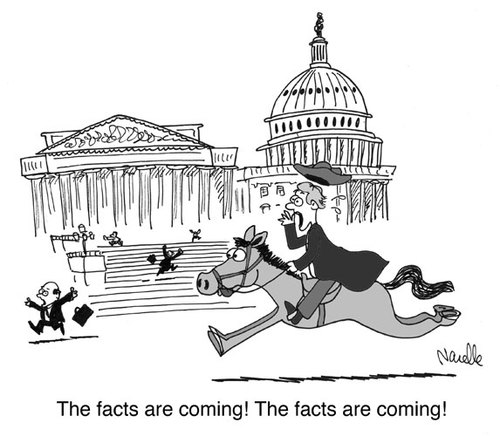
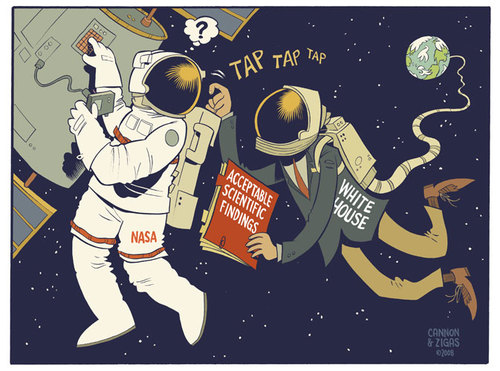
Edward Tufte on iPhone
Posted on Monday, July 14, 2008
From the NYT:
“The content is the interface, the information is the interface, not the computer administration debris,” he said in a video critique of the iPhone.Now that's a statement that resonates, considering the amount of (useless) interface on this page.
Its You They're After
Posted on Saturday, July 12, 2008
The best analysis on Google's Lively I've read sofar comes from RealityPrime: Its not so much about giving people a nice virtual world to play with, its providing a new interface to harvest new and previously untapped user behaviour. Which reminds me of an excellent article I was send the other day on the near future of advertising, a must-read.
NASA Celebrates 50 Years of Exploration This Year
Posted on Monday, July 7, 2008
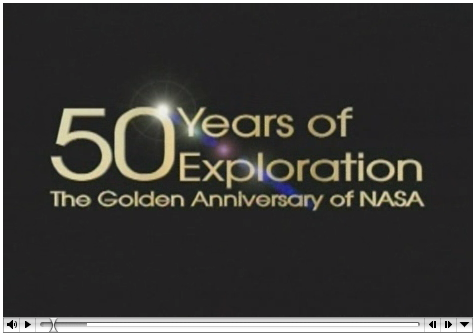
Get started with above video of highlights (btw, where is my embedabble NASA videoplayer?). The official celebration happens around October if I am not mistaken, but according to Wikipedia NASA was established Jul 29th 1958 so we're getting close. Much more on the upcoming celebrations at this NASA 50th Anniversary website.
Sarkozy's Whirlwind Extends Into Outer Space
Posted on Tuesday, July 1, 2008
Excellent article on the Asteroid Underground movement here in the US
Posted on Saturday, June 21, 2008
In the July 2008 issue of the Smithsonian Air & Space Magazine: The Million Mile Mission. (via).
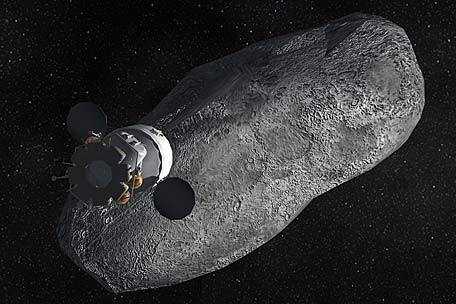
Space Behind the NASA Portal
Posted on Thursday, June 19, 2008
Ever since the re-design, I've been itching to hit the top right corner of my screen to make all of the modules on the NASA Portal go away, providing me with an unobscured look into outer space (yes, its an OSX thing). One of my current activities involves the NASA Portal so diving into the css sheets I finally got a chance to see what I was looking for. I'd still like to see a realtime background image there some day, but from the first looks into the back end CMS on which the Portal is build, this will have to wait a while ;-)
NASA CIO
Posted on Thursday, June 12, 2008
An audio interview with NASA CIO Jonathan Pettus on web2.0 and NASA's web presence.
Friday Afternoon Yawns
Posted on Saturday, June 7, 2008
OgleEarth is on the ball with his critique on Walt Disney Park's layer in Google Earth being 'the next best thing to being there'. Reading it, I recognise I am reading my own unexpressed yawn about it (without having had a look at it myself I do admit, but that tells it all I guess). A virtual Disneyland devoid of people, and no possibility to take a ride, WoW!? If only I had some time to go back to the enthusiasm while working on UGO, but for some reason, its not that attractive at the moment. Even with the ability to bring it into the browser, which is pretty cool yes, apart from the techno fetish, there's at the moment not much occasional inspiration to throw time at Google Earth (apart from learning the javascript GE API implementation perhaps). Has anybody heard anything about Second Life lately btw?
On a more enthusiastic note, I attended the Google I/O conference 2 weeks ago here at Moscone West. Now that was exiting! Not so much from a Google Tech or developers point of view (albeit that was pretty inspiring too, mostly diving into the Google App Engine, on which I had my first encounter with the GE browser plugin), but more from a cultural real people point of view. Apparently they brought Google culture over from the Googleplex to the conference center. I lost my camera in the meantime so can't show you my pictures of all the beanbags, free food, and other goodies, but man, that's a sweet company culture (and flickr tags are there to prove it). And a young crowd too.
I recognised the same kind of culture here at Yahoo HQ earlier this week where we were sitting in on a meeting on the upcoming Yahoo Hackday. Working at a place where the coffee corner closes 30 minutes after lunch has been served (that's around 2:00pm folks), and where the cappucino comes out of a prefab instant-make coffee-crap-machine, I am all for Google joining the ranks here on the NASA Ames premises. And I certainly hope some of their culture bleeds over the fence into Ames, which I'm sure it will (not sure if i'll be around to witness it though as they only start building in 2013).
As usual, these high profile Google announcements draw quite a bit of cynical critisism from the likes of Bull's rambles, Valleywag and ZDNet but that's as yawn inspiring as the Disney layer in Google Earth.
My two cents for the weekend: Ask not what Google or Yahoo! can do for you, but what Google/Yahoo! culture can do to your space program.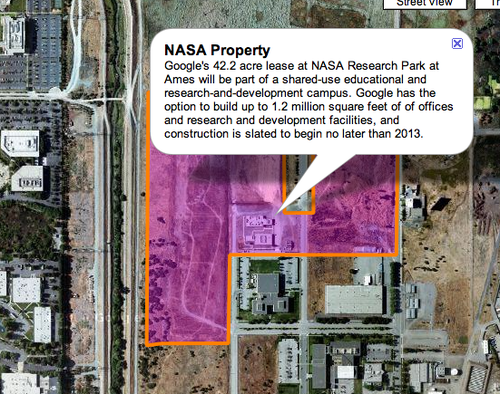
(see it in google maps, or, if you really really want to, in Google Earth)
View Larger Map
Easily The Best Live TV Channel Around
Posted on Thursday, June 5, 2008
Now how do I go about getting an RSS or email message (or better, a live TV player popping up) whenever there is a live EVA going on on NASATV? And what about having the spacewalks made available on-demand? Would I be able to switch cameras myself perhaps? Lots of opportunities to make the NASATV service even better.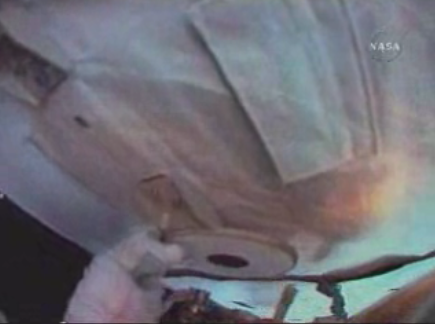
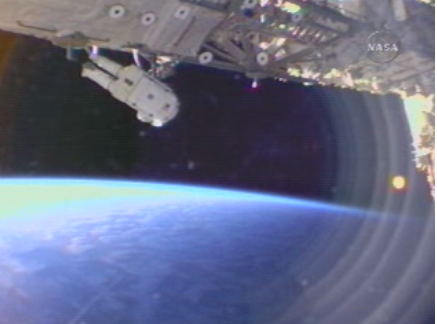
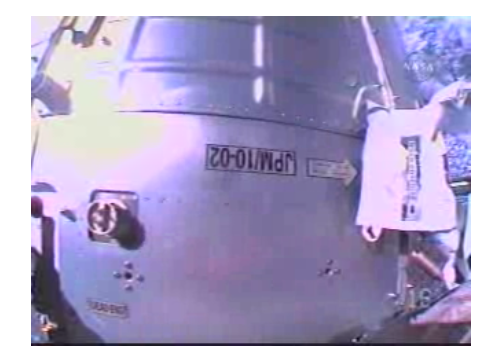
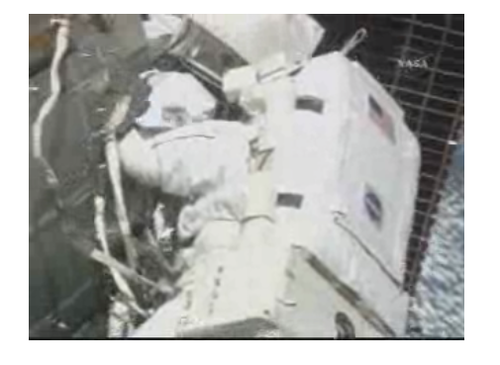
Spacewalk ongoing
Posted on Thursday, June 5, 2008
Excellent background sound and video while working. Especially when mixed in with SomaFM's secret agent channel in iTunes (look for it under radio->electronic). Even better, mix it up with SomaFM's own Space Station Soma channel: Tune in, turn on, space out. Just playing around, I included the NASATV broadcast on this page of mine. U can also get it at NASA.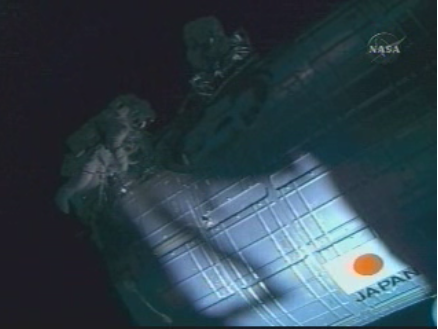
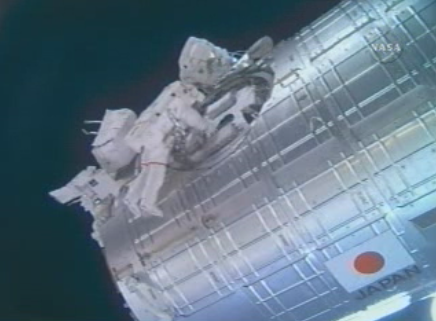
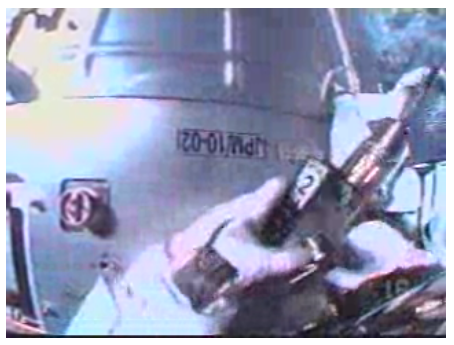
Intergalactic TV
Posted on Wednesday, June 4, 2008
Doing some research on NASATV (wikipedia) I come across a couple of other space agency TV stations, like ESA's (boring not much happening there) and this one from the Russian Space Agency. On the latter, I am welcomed by Mr Ostrovsky, Head of Roscosmos-TV (below). Reminds me of a Dutch show. Too bad they don't have regular TV webstreams ;-).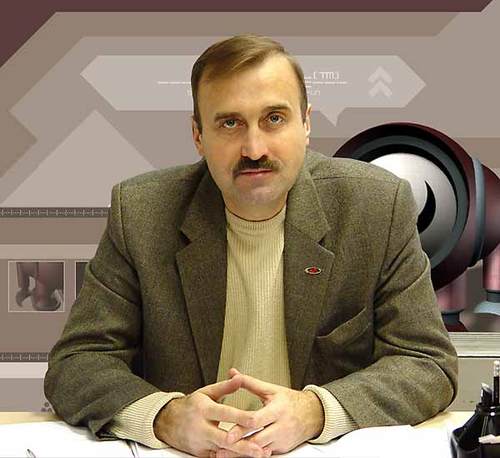
Real or virtual?
Posted on Wednesday, June 4, 2008
Its hard to tell these days if you look at below photos of todays Kibo docking (via).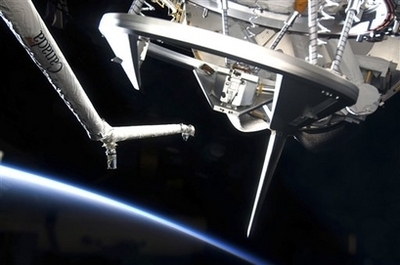
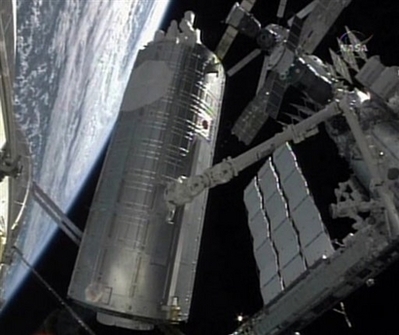
The Awakening
Posted on Tuesday, June 3, 2008
After Phoenix's recent twitter success, satellites are waking up to the opportunity. Its LRO, its LCROSS, its..its...the ISS? The Shuttle? Why not the Shuttle's external tank (it travels a fair bit over land before it gets shot into space), the Deep Space Network antenna's, NASA's Columbia supercomputer ...Hallelujah, let there be light, the sensor web awakens!
(nice job title: for 2 years I was LCROSS twitter. Would like to see some GPS going on at the same time...following all of NASA's hardware around in Google Earth in real time would be kinda neat...)
Phoenix Twitters
Posted on Monday, June 2, 2008
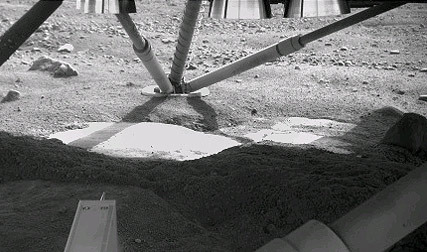
NASA Watch gives us the twitter of all twitters: MarsPhoenix. From an interview in Wired:
...can imagine a future academic writing the clause, "identity creation through character limitation," but the personal touch, even if borne of necessity, caught on with the Twitter community.
Writing from the first person turned out to be mainly a solution to the 140 character limitation on twitter. Nice how evolutionary solutions play into the impersonification of spacecraft.
Browsing a New World
Posted on Monday, May 26, 2008
Just before logging off, I am reminded of the resemblance I noticed before between the mission logo of Phoenix and the Firefox logo. Guess it makes sense if you consider the Phoenix lander a physical counterpart to the world's (2nd) most popular web browser. Wonder whether we'll ever get the physical equivalent of greasemonkey scripts on our planetary explorers. Btw, looking for the high-res version of the Phoenix logo, I ran into below image of a mural that was painted on the outer wall of the Phoenix Sci Ops center at the Uni of Arizona. Sweet! (more info here)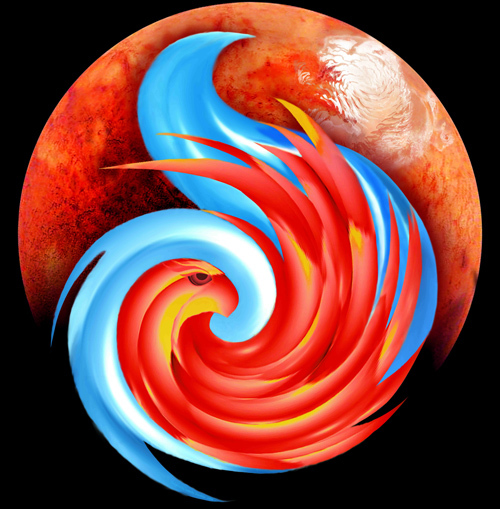


WorldWind presentation at the Yahoo Brickhouse in SF
Posted on Thursday, May 22, 2008
One of these events which makes me remember why I moved down here from Amsterdam: a presentation on NASA's open source 3d browser at the Yahoo Brickhouse in downtown San Francisco. Great place, great talk, great people. More pictures are at my Flickr. For some reason, I have a hard time finding some more info on the Brickhouse on Yahoo's properties. Weird how they not have a full YBH page up there. Anyway, the video of the talk should become available on the Yahoo Developers Network somewhere next week I was told. I'll update as soon as its up.
Mike Griffin at Googleplex (June 2007)
Posted on Saturday, May 17, 2008
Finally got a chance to see the recording of Mike Griffin's talk at the Googleplex last year. Informative talk. $55 a year per US citizen goes to NASA, out of an average 8k$ yearly tax bill. That's actually more than I'd expected.
World Wide Telescope Released
Posted on Thursday, May 15, 2008
Yep, its here (given the page design you'd mistake it for a Mac site just for a second). Ever since I upgraded to Mac OSX 10.5 (aka Leopard) last week my Parallels XP virtual machine is in a permanent state of reboot so I haven't had a personal interaction with WWT yet, but from the reviews of it over at OgleEarth and The Earth Is Square, it seems to be a pretty nifty application.
Can't wait to get my NASA Macbook Pro exchanged for a proper PC...
The Geoweb Is Evolving
Posted on Wednesday, May 14, 2008
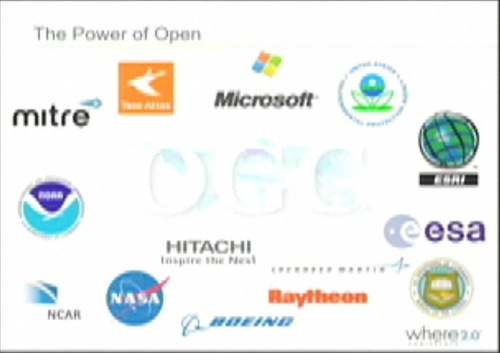
Straight from Burlingame at the Where2.0 conference, John Hanke and Jack Dangermond talk about Google and ESRI working together. Note that there's two space agencies in above image (considering NOAA is not) and a couple of NASA contractors.
Some views to enjoy (until I get back to posting regularly)
Posted on Tuesday, May 6, 2008
What do you want NASA2.0 to be?
Posted on Wednesday, April 23, 2008
I am here in San Francisco at the Web2.0 Expo in Moscone West, just kicking off with the highly informative 'Building Next Generation Web2.0 Applications' workshop by Dion Hinchcliffe (See some of his slides below).
One of the points he made very clear is the value of data. Data is the new Intel inside as Tim O'Reilly so succinctly proclaimed in his seminal 2005 paper on 'What is web2.0'. The web is a platform. For NASA, its a platform for space exploration. Getting web2.0-ified seems not so much a question of how to gather a data class valuable to its users (after all, who doesn't like images like these, or looking through the eyes of our rovers on Mars, as seen from above), or getting everybody to become rocket scientists (although...mmm...;-), but more the other way around: how to leverage its vast data resources (after all, what are satellites other than data gathering devices) to get the public more engaged in NASA's mission and activities. Space is cool, and you know it. Its just too far away from our daily lives on the web. Give me space exploration, right here, right now, and we'll give you our database of space exploration intentions.
Building an open platform on the web where NASA can easily share all the great data it gathers is the anwser. Be there as the images pour in. Be there as the exploration takes place. NASA2.0 is all about getting NASA's data more available, usable and shareble on the web. Where possible in (near) real time please.
Which reminds me of this post over at the Institute Of The Future about post-scientific society. Well worth the read!
American innovators — with their world-class strengths in product design, marketing and finance — may have a historic opportunity to convert the scientific know-how from abroad into market gains and profits. Mr. Hill views the transition to “the postscientific society” as an unrecognized bonus for American creators of new products and services.And they just released today a new initiative called X2 about the future of science and technology.
A post-scientific society will have several key characteristics, the most important of which is that innovation leading to wealth generation and productivity growth will be based principally not on world leadership in fundamental research in the natural sciences and engineering, but on world-leading mastery of the creative powers of, and the basic sciences of, individual human beings, their societies, and their cultures.
Just as the post-industrial society continues to require the products of agriculture and manufacturing for its effective functioning, so too will the post-scientific society continue to require the results of advanced scientific and engineering research. Nevertheless, the leading edge of innovation in the post-scientific society, whether for business, industrial, consumer, or public purposes, will move from the workshop, the laboratory, and the office to the studio, the think tank, the atelier, and cyberspace.
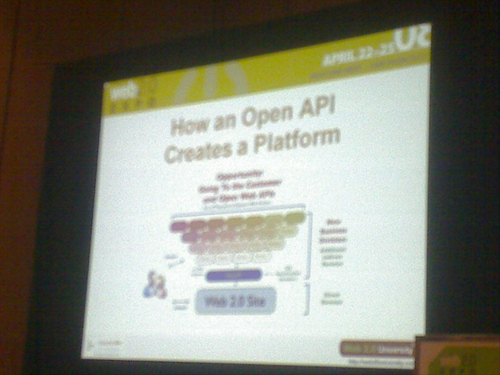
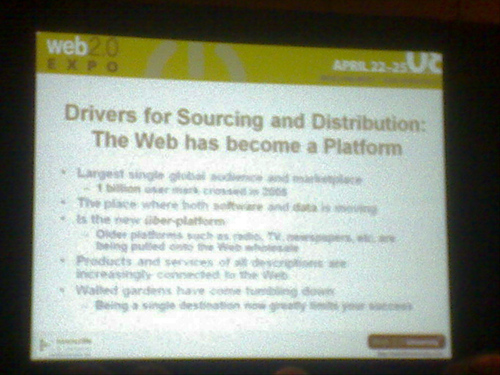
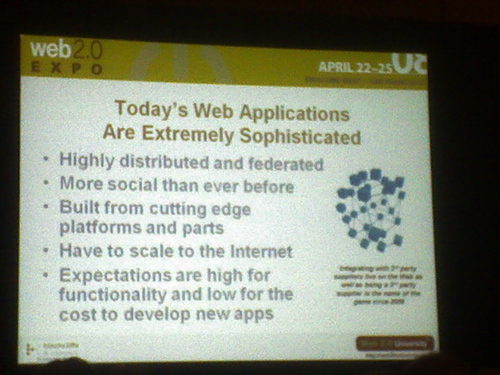
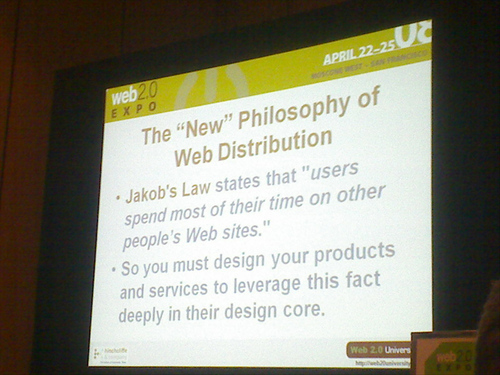
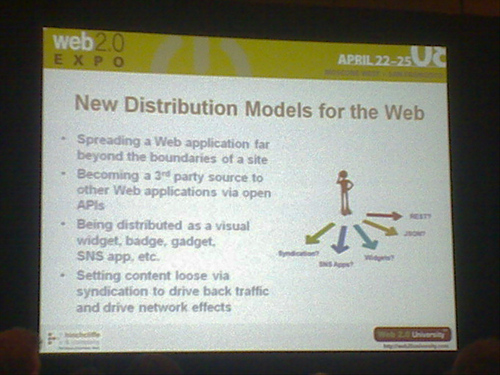
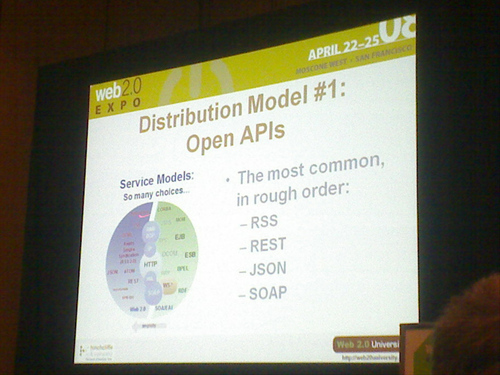
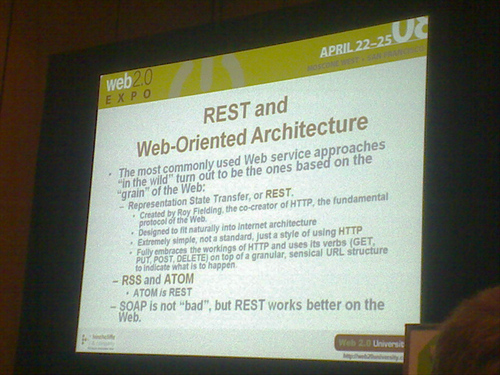
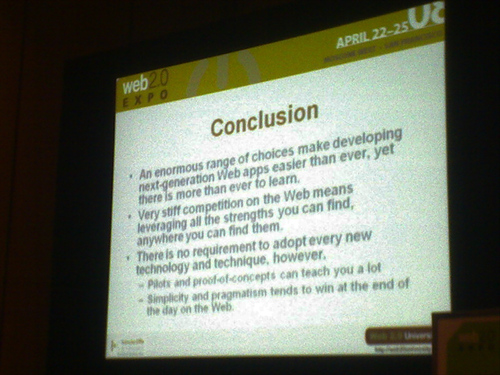
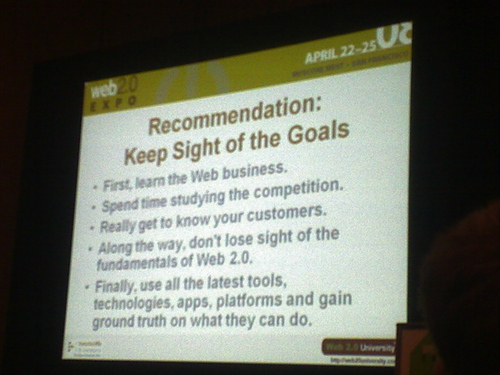
Space on your computer
Posted on Wednesday, April 16, 2008
A couple of links from DC Dulles Airport:
- I wrote about a GE vis of the ASAT test earlier last year (earlier post). Following users stats on a little Youtube video I made of the STK ASAT scenario, I come across below AGI's Youtube promo video of the ASAT test.
- If you have a minute, have a look at this simulation environment from DigitalSpace. Once installed (PC only) its pretty neat to push the little rovers around and play with the different gravity options (Earth, Moon, no gravity). There are user interface issues but these will probably be solved along the way.
- GE 4.3 was released yesterday. Some cool stuff: Google gave its Earth an atmosphere, day and night time visualisation and a whole lot more I don't have time to test right now. Check in with GEB for a run down of the new features. But wait, did they alter the shortcuts? I can't zoom in/out using Apple+PageUp/Down anymore.
When is the last time you bought music online?
Posted on Monday, March 24, 2008
Came to mind after reading this discussion on TechCrunch following Arrington's reaction on a post in the NYT arguing for artists to receive a cut in the sell of a large social network Bebo hosting a lot of music. Makes sense that the artists should get their share. But then again, its highly unlikely it will ever happen. Unless the artists just unite and create a platform themselves.
On the comments section, there needs to be some innovation in how these discussions are displayed. Surely just listing them under one another is not the only way we can visually interface these threads of discussions.
Cloud computing
Posted on Sunday, March 23, 2008
Nicolas Carr keeps with his story of The Big Switch. This comes from a piece he wrote on the Advertising Age website:
One change that's already obvious is the blurring of the line between software and media. Consumer software, until recently sold like a package good, is becoming the next great media business. The success of a software program is coming to be judged not by unit sales but by the ability of the provider to attract an audience, hold that audience's attention with interesting data and tools, and deliver relevant ads to it.The whole story is well worth the read. Btw, I am not getting paid to include this link or any of the earlier references to that book. Its free publicity. Which all combined seems to help to get him into the WSJ bestsellers list. He must have touched a nerve in IT land.
A.C. Clarke died today
Posted on Wednesday, March 19, 2008
...(bbc news)
update: Google's Chief Evangelist Vint Cerf also says goodbye to Clarke in this post. It includes a nice video of Clarke recorded end of last year.
Time to get on the bus
Posted on Wednesday, February 27, 2008

Ok, so its time to give a brief update on my (physical) whereabouts. Since last thursday I moved from Amsterdam to Mountain View, Silicon Valley to work with Chris Kemp and his collegues over at NASA Ames starting next monday March 3rd. Weehoo! Finally, a long held dream is coming true, taking part in the upcoming merger of outer space and cyberspace, right at the heart of where all things space are happening. Couldn't be better!
As for this blog, looks like I will be using it from now on to give you a personal insight in my personal and professional experiences here in the Valley. Sofar, these include a great arrival and first few days enjoying the Bay Area rainy season (yes, it can rain here...), a visit to the Vertical Motion Simulator on NASA Ames premises last friday (for photos have a look at this flickr album), my first NASA vrimibo with Ames director Pete Worden, Chris Kemp and several of my upcoming collegues (vrimibo is short for 'vrijdag middag borrel', Dutch for the traditional friday afternoon drink), a first counter-clockwise drive around the Bay Area, and writing off the first item on my wishlist of things-to-do-when-I-get-to-the-Bay-Area: attending a Long Now seminar in San Francisco (on which more in a follow-up post).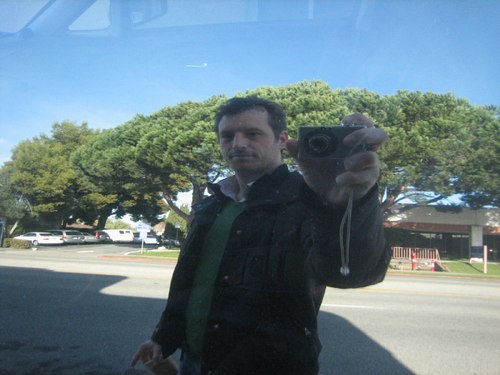
US Satellite shoot-down a success
Posted on Monday, February 25, 2008

Enough has been written about the succesful shoot-down of the defunct NRO satellite last wednesday, so let me just chip in with above photo I found as part of a DoD photo essay of the event. Its a beautiful shot, almost surreal, reminiscent of the V2 and alike. Looking around, I am surprised to find the DoD New Media website is also surprisingly up to speed on web2.0 technologies, as below embedded video of the press briefing by General James Cartwright shows. Some of the clips run a slick CNN-like leader with the name 'The Pentagon Channel'...Interesting proposition...;-)
IYA 2009
Posted on Tuesday, February 12, 2008
Not sure what the aliens are doing in below poster, but during 1 revolution around the Sun its International Year of Astronomy (aka IYA).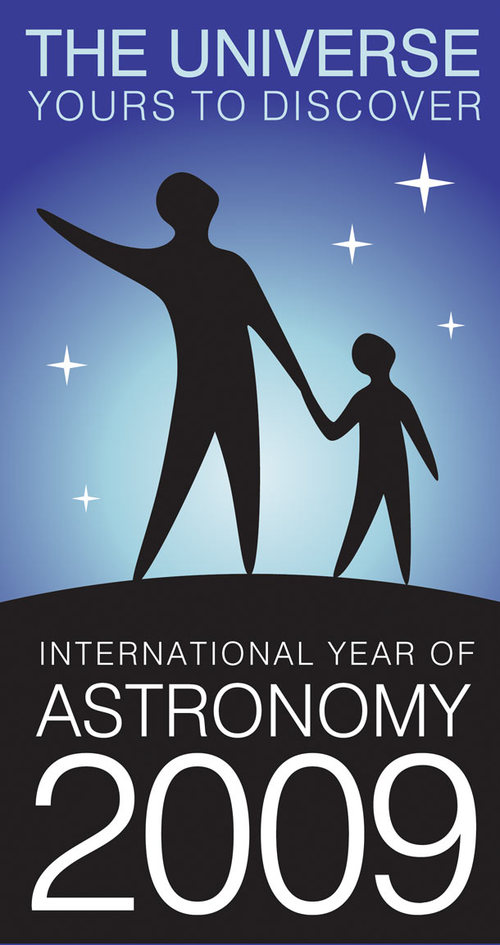
SpaceCollective.org
Posted on Monday, February 11, 2008

Techno utopianism lives on. Its been a while since we heard from Kurzweil, but I recently came across this website called spacecollective.org, set up by former country man Rene Daalder. From a first peek, it seems to be along the lines of what this blog is all about, that is, evolution of technology and the role of space in this evolution. Spacecollective.org seems to have a healthy critical stance, definitely worth a visit. I like the fact it originates from someone in the film industry, one of the main story telling industries out there and a long time passion of mine. Like the Peppers used to sing:
Space may be the final frontier
But it's made in a Hollywood basement.
Realtime news becomes programmable "LEGO"
Posted on Saturday, February 9, 2008
A good post over at O'Reilly Radar on the evolutionary nature of news agencies and the semantic web, carrying amongst others the following copy:
The end of benefits from decreasing the time it takes for news to hit the market. He describes the quest for zero latency in news, from the telegraph and early stock tickers and the news business that Reuters pioneered through today's electronic trading systems. (Dale Dougherty wrote about this yesterday, in a story about the history of the Associated Press.) As we reach the end of that trend, with information disseminated instantly to the market via the internet, he increasingly sees Reuters' job to be making connections, going from news to insight. He sees semantic markup to make it easier to follow paths of meaning through the data as an important part of Reuters' future.
and
What I think does ultimately matter is the ability of professional media to build specialized interfaces and vertical data stores that are suited to their niche, hopefully harnessing data and services from the consumer internet, and mashing them up with specialized, perhaps private, data stores. Put that together with metadata for programmable re-use, and you may really have something.
The Medium is the Mind
Posted on Saturday, January 19, 2008
Another good reason why to read below book, the following quote comes from the author's blog:
"The medium is the mind," I write toward the end of The Big Switch, arguing, as others have before, that the tools we use to gather, store, and analyze information inevitably exert a strong influence over the way we think. As the internet becomes our universal medium - what the director of the Annenberg Center for the Digital Future terms "a comprehensive tool that Americans are using to touch the world" - its technical characteristics also begin to shape, slowly but inexorably, the workings of our memory and our other cognitive processes.
Are Humans in Space worth investing
Posted on Friday, January 11, 2008
Via NASAwatch comes this story in the NYT about the question: "Is Space Exploration Worth The Cost?"
The answers by the panelists are certainly worth reading, but what I find interesting is that I more and more tend to read these main articles just to see what the ensuing discussion in the comments is about. In this case, the fact that all panelists have careers tied to the space industry certainly doesn't help to give the article a feel of objectivity, as shown by the first row of comments . Here is another comment worth reprinting:
Economists generally think competition is a good thing, but suddenly once we’re out of the atmosphere everyone is going to cooperate and everything will be fine? All the national governments will join hands, and do everything efficiently?
Without some kind of national/corporate race in space — which is impossible due to U.N. treaties — there will never be much beyond LEO.
I am not so sure the UN treaties are the main problem though, cause even without these treaties, what would be the commercial incentives on which businesses are willing to invest +billion dollars for a market of consumers that's...well...back on Earth?
Social Systems
Posted on Monday, January 7, 2008
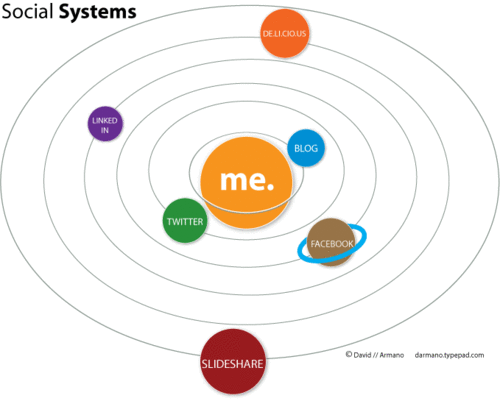
Space makes for great metaphors, but sometimes they can seem just a little bit off. The image above I read, but what about this text:
The related concept of a "social graph" is difficult to explain, but social systems is easy. Many of us are now managing multiple social ecosystems. If you think of these as planets—some rotate in closer proximity to us. We "warm" them with our attention frequently. Others may orbit at further proximities—but they are still in our social systems. When we abandon a social ecosystem that we can no longer sustain, it drifts away from our orbit and dies. Many of us have had these experiences.
The blogpost does link to another interesting post about Influence Riples though. The pond metaphor seems to be better suited here:
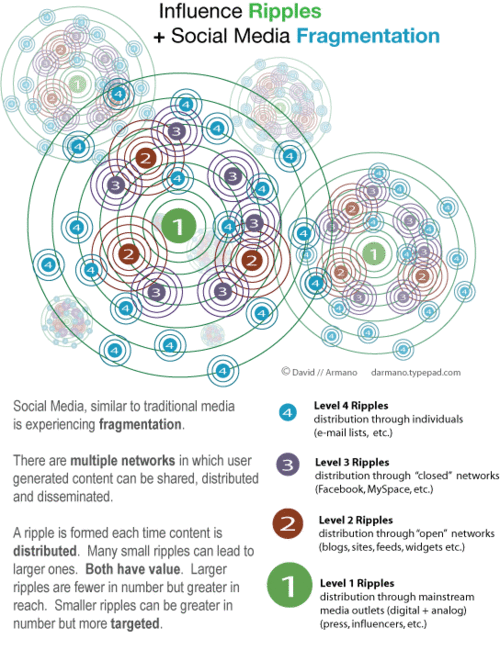
This post's comments also includes another metaphor:
The ripples metaphor is fun, but it is passive and therefore has metaphorical limits.I prefer a bonfire metaphor.
Traditional push-marketing is like a huge organised bonfire. Marketers go to all the trouble of gathering tinder and firewood and inviting people to watch. Then they light the bonfire and stand back as the flames roar and the firewood crackles. Those invited get to enjoy the heat and the spectacle, those a little further away, to enjoy the dancing flames. Those much further away probably don't know there even was a bonfire. And once the bonfire has burnt itself out, all there is left are a few glowing embers and lots of ash.
Social marketing on the other hand is like a network of hilltop bonfires. Lots of different people prepare a limited number of small bonfires. Anyone can start a bonfire and then others on other hilltops can light their own bonfires and so the message spreads. Many people get to enjoy a bit of local heat with their friends and to see the flames flickering on many hilltops. They may even get to feel that they are part of something bigger. And the reach of the bonfire is potentially endless. It only depends upon how many people are willing to light their own bonfires to spread the message.
The metaphor is useful in a number of ways. Firstly, it shows that many small bonfires can reach much further than a large bonfire. Secondly it shows that anyone can light a small bonfire to spread the message to others. Finally, and most importantly, it shows that all these many small bonfires need to be built before the message can spread. If you wait until you see another hilltop bonfire befire you build your own it will be too late. The preparation necessary before a message can spread effectively is one aspect of social media that many commentators forget, in the rush to laud the role of the influencer in propagating social memes.
Back in the real world of influence, it seems to me that traditional marketing and social marketing need each other. Traditional marketing builds category need and awareness (to use the funnel analogy), whilst social marketing enlists those with an interest to spread it further and builds intention to buy. This complementarity is implicit in the p (adoption = traditional marketing) and q (imitation = social marketing) variables in innovation diffusion models in common use for over 50 years!
Keep up the metaphorically enlightening work.
It also links to the following insightful presentation:
Reality Mining
Posted on Thursday, December 20, 2007
Nicolas Carr diggs up another good story: Reality Mining. Some quotes from the TR article:
All this sort-of Web 2.0 stuff is nice, but you have to type stuff in.
and
You can really see things in a way that you never could before--a God's-eye view. One of the examples I've been stuck on recently relates to how transformative Google Earth has been. Imagine having something where you can see all the people moving around on a map. Think about SARS in Hong Kong. What if in a particular apartment building, nobody left for work that day? You could identify a major health problem in 12 hours instead of two weeks. Another example is the social health of communities. It's known that social integration, or how well people mix, correlates with whether or not a community is thriving. With reality mining, you can actually see social integration, as it happens or doesn't happen. Once everyone can see it, then you can start to have transparent political discussions. Why isn't the mayor putting more sidewalks and crosswalks in this area? Could more community events make the area more livable?
Google Earth and the Evolution of the User Interface to the Internet as platform
Posted on Wednesday, November 28, 2007
After wondering about GE's evolution myself yesterday, Techcrunch is now running a somewhat more blunt story of Google Earth heading towards extinction question mark:
Google has announced two new features for Google Maps that mimic features in Google Earth, begging the question: is Google Earth on borrowed time?The first new feature is the additional of terrain in Google Maps. The terrain fly over feature has long been available in Google Earth, but now you can fly over a map and see the contours of the land, all without the need to download Google Earth.
The second new feature mimics the community contribution feature of Google Earth. “Our Maps” brings wiki-style collaboration to Google Maps, with users able to annotate places and share those notes with friends or the greater public.
Google acquired Keyhole in October 2004 and it was immediately obvious as to why: Google wanted the satellite imagery to support their move into serious mapping. Keyhole provided Google Earth, a downloadable program that gave a then unprecedented view of the earth through the use of satellite imagery, but Google isn’t a software company, Picasa and a few small efforts aside. Google has integrated many of the functions from Keyhole into Google Maps whilst continuing to sustain Google Earth, but for how much longer? As Google Maps takes on more and more of the functionality of Google Earth the appeal of Earth must diminish. It also makes sense that Google would rather grow and sustain a web product over a software download. Google Earth will still be with us for some time to come, but how long is now up to Google, and I’m betting that Google is already looking at ending support sometime in the next year or two as Google Maps becomes everything Google Earth now is, but online and without the download.
Looks like Avi has the most sensible comment in there which deals with the topic at hand:
...As CPUs and browsers become more powerful, the features of the two applications will merge, as I’m sure was the plan all along.But since browser evolution has been so excruciatingly slow, I think it’s far more likely that we’ll see Google Earth become the defacto 3D web browser vs. Duncan’s prognostication.
China to the Moon
Posted on Monday, November 26, 2007
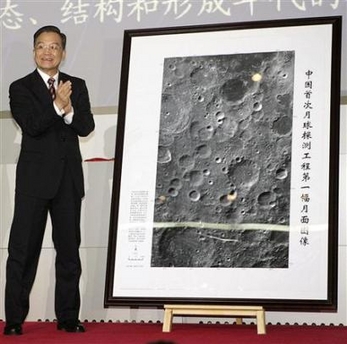
A nice combo: China and the Moon. More at Yahoo! and xinhuanet.
Google Space Agency
Posted on Monday, November 26, 2007
A quick backlog of links related to the Google NASA coop. They're working on it down at Ames in what is called the 'Planetary Content Team' (nice title):
The Planetary Content Team at NASA's Ames Research Center develops software that makes it easier for scientists and engineers to publish and access Earth and planetary imagery and data via the Internet. This includes both educational/outreach content aimed at the general public as well as technical data aimed at the scientific community. Headquartered in the Intelligent Systems Division at Ames, the team also includes partners in other areas of the agency and elsewhere.
They do both the NASA Google Moon work (Google maps only sofar but they're working on a Google
“NASA’s objective is for Google Moon to become a more accurate and useful lunar mapping platform that will be a foundation for future Web-based moon applications, much like the many applications that have been built on top of Google Maps,” said Chris C. Kemp, director of strategic business development at NASA Ames. “This will make it easier for scientists everywhere to make lunar data more available and accessible.”That's gonna come in handy when the robots are going to land on the Moon in the decades to come.
View Larger Map
Digistuff
Posted on Monday, November 26, 2007
Alexander van Elsas points to a flickr set with some nice quotes. They're not all that great but enough are interesting to wade through. Here are a few of my favorites.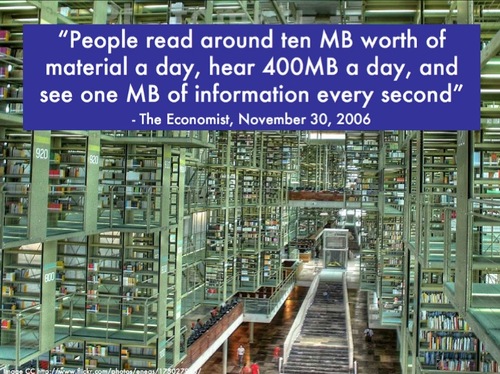
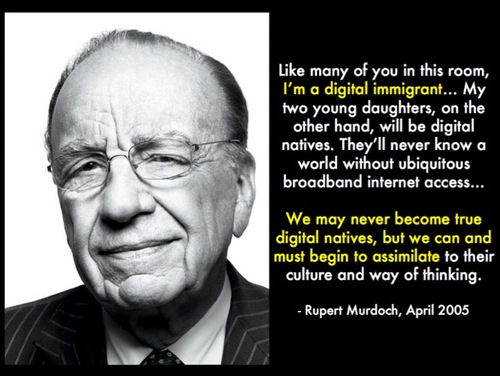
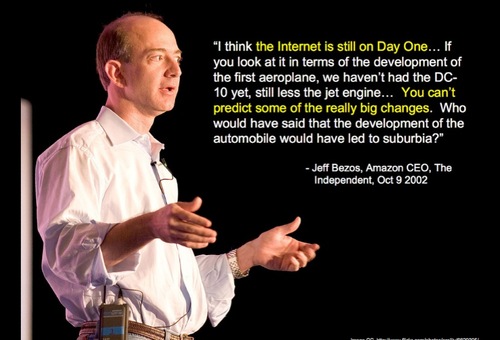
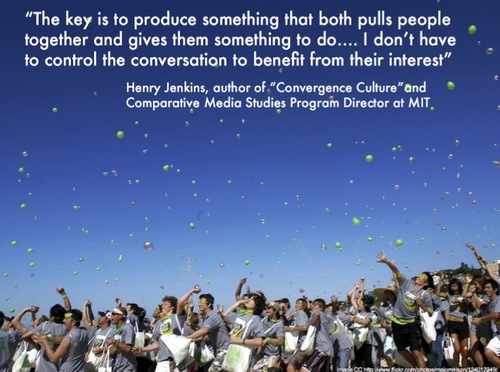
Thanksgiving 2008
Posted on Thursday, November 22, 2007
No thanksgiving on this side of the pond but a nice thursday evening in Amsterdam. A nice post by Nicolas Nova (one of my favorite blogs) on an article in the Economist on the fading fad of futurism:
Think small, think short—and listen
So there you are on the moon, reading The World in 2008 on disposable digital paper and waiting for the videophone to ring. But no rush, because you’re going to live for ever—and if you don’t, there’s a backed-up copy of your brain for downloading to your clone.
The most heeded futurists these days are not individuals, but prediction markets, where the informed guesswork of many is consolidated into hard probability. Will Osama bin Laden be caught in 2008? Only a 15% chance, said Newsfutures in mid-October 2007. Would Iran have nuclear weapons by January 1st 2008? Only a 6.6% chance, said Inkling Markets. Will George Bush pardon Lewis “Scooter” Libby? A better-than-40% chance, said Intrade. There may even be a prediction market somewhere taking bets on immortality. But beware: long- and short-sellers alike will find it hard to collect.Reminds me of a quote from CNBC back in 2000: '"time is money, so real-time is real money". Where is my online prediction market?
Rosetta looks at the Earth
Posted on Tuesday, November 20, 2007
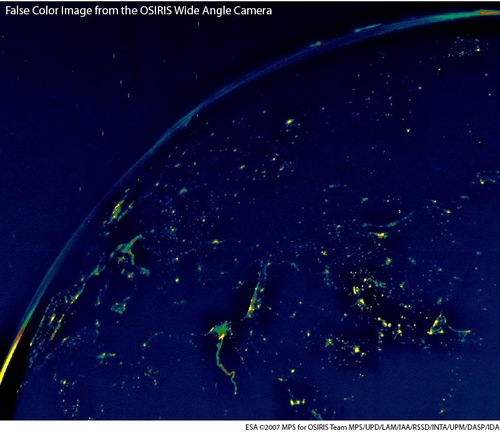
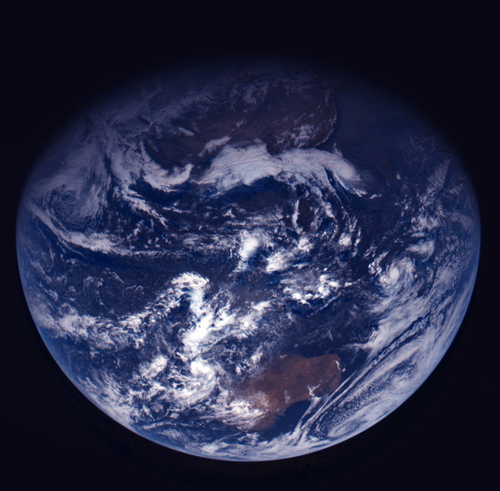
The first one is an oblique look at Europe with the Nile delta and Israel in the middle of the image. More about these images at ESA.
Space Explo's Value Propositions
Posted on Monday, November 19, 2007
The Register today writes under the title 'Americans clueless on NASA budgets' :
A recent survey, carried out on behalf of The Space Review, has revealed that the average American believes a quarter of the country's public purse goes towards funding NASA.Unfortunately, The Register gets its facts wrong because the survey was never conducted on behalf of The Space Review but merely written about on The Space Review, which happens to be one of the more interesting space blogs to read out there (together with NASA Watch and spacecynics). Going to the original article quoted above, I find 2 great articles on space exploration, relevance and customer value: Part 1 and Part 2. On the spot! It's a relief to read this as it provides a pretty clear cut picture of space exploration and its place in modern day consumer market thinking:
The survey found that most people reported the belief that NASA is almost as well funded as the military. The Department of Defense does receive roughly 21 per cent of the nation's wonga, but most people overestimated this by a further 12 per cent.In reality, NASA gets something like 0.6 per cent of the natonal budget, a fact which researchers report came as a surprise to those being surveyed. According to The Space Review, one participant replied "No wonder we haven’t gone anywhere!".
The survey formed part of a larger analysis of the costs and benefits of having a publically funded space agency. The writers argue that people have scant knowledge of what NASA actually does. Combined with the huge overestimates of the cost of running NASA, it is not surprising that people often regard it as being poor value for money.
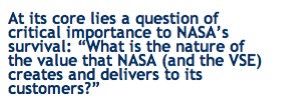 .
.
HDTV from the Moon
Posted on Wednesday, November 14, 2007
The only thing missing now is a live internet connection to this camera. Anybody has a 30m dish available? More on the video material at JAXA, the Japanese space agency who's satellite SELENE is currently flying the HDTV camera in low lunar orbit.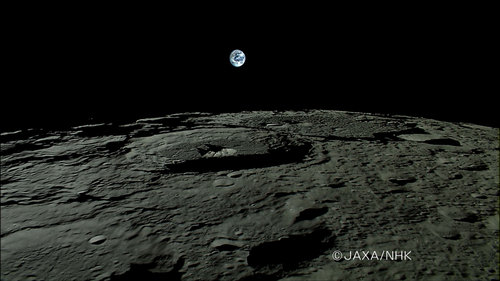
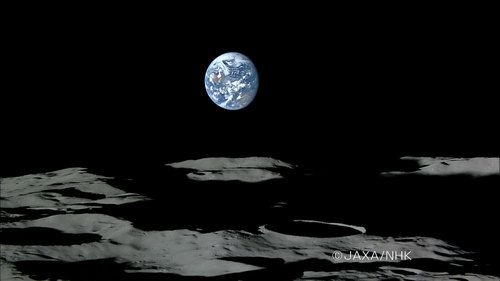
Facebook takes the dive
Posted on Friday, November 9, 2007
Yikes, this is getting pretty weird: Facebook Is Marketing Your Brand Preferences (With Your Permission). More at Battelle. And the best analysis yet, over at Rough Type: "The medium is the message from our sponsor". He also has some more on McLuhan.
Targeted advertising...or machine learning...?
Posted on Tuesday, November 6, 2007
Which of the two was it again? Who's teaching who? This insightful article Can Facebook feed its ad brains? on the imminent Facebook ad platform (and related industry) gives some clues. It still amazes me that this is the business model on which most of today's web2.0-ish Internet ventures thrive. Highly relevant advertising. Actually, when I think of it, the 'what other users liked who bought this book' feature over at Amazon is quite ok. Not that I immediately go out and buy all those books, but it provides a bit of context, and in that sense its not all that unuseful. These emerging data patterns still strike me as the Internet's equivalent to thoughts emerging, although I also immediately hear myself saying: "don't metaphor me in".
I had a very brief chat on Skype late last night with a friend over in Australia who was just about to go to work in the morning and who had this to say about it:
the 'machine' is the mechanism: the mechanism is the people. The 'machine taking over' is ultimatley a submission unto the hive of the people - it is a social demise as well as the literal manifestation of technology - and an avoidance of the self, the self will and self power of thought
DinnerTV: Its getting there, the Social API
Posted on Saturday, November 3, 2007
Aka OpenSocial. Below video gives a good intro.
Some news from Zurich
Posted on Monday, October 29, 2007
A presentation I was pointed to: Web2.0 thoughts from Rolf Skyberg, disruptive innovator at eBay.
ESA is taking a leap with this Space & Art exhibition highlighting some of the best artists out there working with space related concepts & technologies:
ARTIST AS SPACE EXPLOREROn the eve of 'Space Exploration - A Global Societal Project', 7-9 November 2007 in Berlin, a special presentation shows why artists, as important opinion formers in society, should be part of the whole picture of exploration.
The exhibition is curated by The Arts Catalyst and presented in collaboration with the European Space Agency and Transmediale, the Berlin-based festival for art and digital culture.
The potential cultural dimension of the European Space Agency's exploration activities is shown here in a group of projects specially devised to accompany Europe's activities in space, collaborating with the European astronauts on the International Space Station, highlighting Europe's ground-based space facilities such as microgravity facilities, mission control and launch sites, and looking towards the future of moon and Mars missions. The projects are designed to have a high profile in the European media and also to show how the world of the arts is engaging seriously with space issues.
The exhibition is one of the more visible outcomes of the ISS Cultural Utilisation study and is being held as part of a large scale International Space Exploration Conference organised by ESA and DLR and taking place in Berlin 8 & 9 November. Looking forward to see the exhibition and meet some of the artists present. Its gonna be interesting to see what Europe has to say about its future in space (update: I just found out that the first European O'Reilly Web2.0 Expo is taking place in Berlin during the same week):
SCOPE & OBJECTIVESIn 2001, space exploration was identified by ESA Member States as one of Europe’s key priorities for the future and the European space exploration programme, Aurora, initiated. In the context of this programme, Europe is planning ahead for the future and developing a long-term strategy for space exploration which provides perspective and orientation for future European investments in space exploration. The underlying principle of the European strategy is to implement space exploration as a global and societal project contributing to societal development. Following this principle the development of the strategy is performed in close consultation with all key stakeholder groups and to this effect ESA has undertaken various stakeholder consultation activities in the last years. The fundamental motivation for an early engagement of stakeholders in the strategy formulation phase is to create the foundation for a sustainable European space exploration programme which creates value for the society. At the time of the International Exploration Conference a first version of the European long-term strategy for space exploration will have been developed. The key objective of this conference is therefore to share with the broader stakeholder community the outcome of consultations and work performed throughout 2006 and 2007.
It will address in particular:
- The broader societal relevance of space exploration based on principles such as inspiration, knowledge, innovation, competitiveness and cultural development.
- Specific European interests and goals and the resulting European long-term scenario for space exploration.
- The international scenario and the importance of broad international coordination of European space exploration activities with existing and new international partners who can contribute to the robustness and cost-effectiveness of the programme.
- The focus of near-and medium term European and international exploration activities and the required means for exploration.
Objectives
- Reaching out to new stakeholder groups, not yet known to the space community, who may not know that they are stakeholders or even beneficiaries of space exploration and vice versa.
- Build a broad support base by creating awareness amongst current and new stakeholders groups.
- Create sustained interest and active support for space exploration as a societal project.
- Target each group with a specific tailored message to enhance understanding on space exploration and why it is important for society at large.
- Encourage continuity in relationships between institutions such as ESA and different stakeholder groups.
DinnerTV: Adapt or Die
Posted on Sunday, October 28, 2007
Vint Cerf about Digital Economics at the Google Analyst Day 2007:
Darwin was right, you only have two choices: adapt or die
@23:16 he gives a quick update on the Interplanetary Internet.
Web2.0 summit
Posted on Sunday, October 21, 2007
For a quick update on what's happening with Web2.0, have a look at the bloggin' over at O'Reilly Radar on the Web2.0 Summit that took place last week. Here are a couple of interesting posts in my opinion:
- Web2Summit: Backstage with Rob Currie of Dash
- Web2Summit: Radar Networks Unwinds twine.comWeb2Summit: Backstage with Meg Whitman
- Web2Summit: Backstage with Mark Zuckerberg
- More on Techmeme and Financial Markets
Here are the videos. And this is another good post @ O'Reilly: CFP Where2.0 2008
DinnerTV: 30min. of the Google Guys @ Zeitgeist 2007
Posted on Sunday, October 21, 2007
Zeitgeist 2007 (below is the Youtube video). @ 9:54 Larry Page talks briefly about Google's involvement in the X-Prize, @ 17:32 Esther Dyson hints at inner space (i.e. healthcare) being a more interesting market than outer space:
Outer space is really cool but I am not sure how much Google can do with it.(via SearchEngineLand)
DinnerTV: Facebook meme
Posted on Monday, October 8, 2007
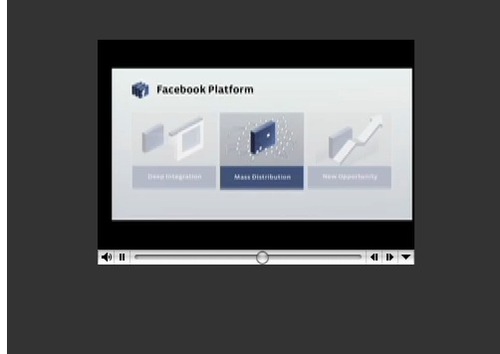
A few weeks of relative unplugged quality time and whoop, you're missing the 'next big thing' on the Internet. It took a while, but I finally spent some time reading up on the Facebook meme. Mmm, interesting, a pagerank Social Graph view on people instead of websites...For a good intro, read this, make an account here, and have a look at this video with Mark Zuckerberg talking about the Facebook platform for developers (not sure if I like his version of the Steve Jobs style though...).
Sign up now: your 7-day excursion to on the Moon
Posted on Sunday, September 30, 2007
Doing some overdue reading on developments in the space explo arena, I am struck by below slides depicting an assessment of possible Lunar sorties in NASA's latest Lunar Architecture update (Sep'07). They give a pretty good first grasp of the distances involved when future astronauts r gonna have a great time driving around the Lunar surface with their Moon buggies. Looking forward to joining them near real time from behind my computer (with only a 1.5 sec lightspeed delay). Another report text worth a look at is the Global Exploration Strategy (May'07) as it provides an interesting (albeit somewhat romantic) view of space explo in an effort to globally coordinate space exploration agendas into a global exploration strategy. Harnessing the collective space intelligence...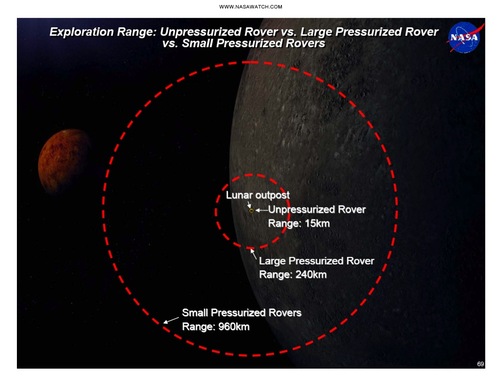 ;br>
;br>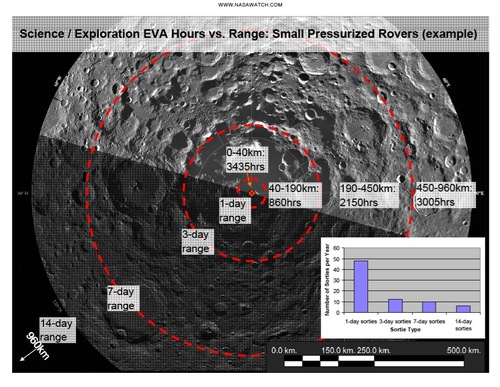
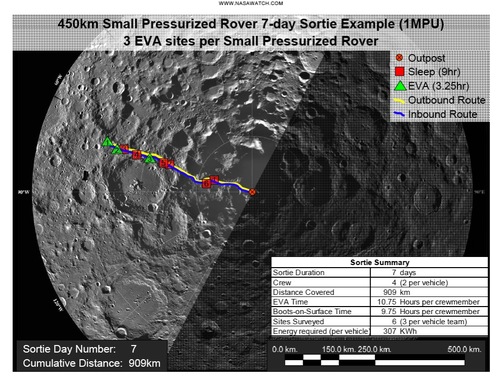
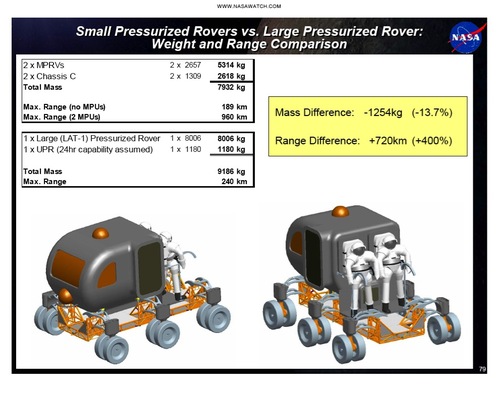
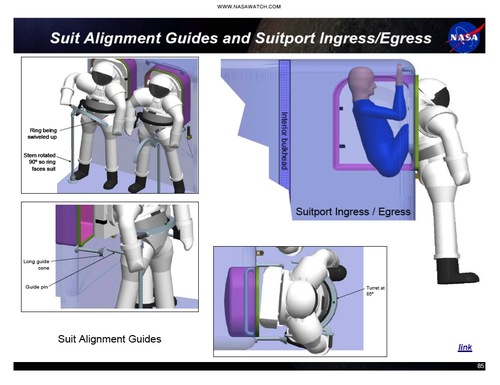
Finally: a peak inside online mapviewing behaviour
Posted on Thursday, September 27, 2007
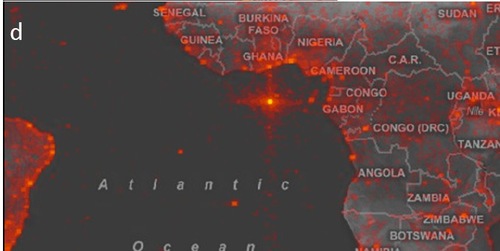
What are we looking at in online interactive mapping systems such as Microsoft's Live Search or Google Earth/Maps? Interesting stuff to wonder about. All Points Blog thinks so too and links to a paper by Microsoft researcher Danyel Fisher entitled Hotmap, Looking at Geographic Attention (above image shows one of many intruiging images from the paper, this one depicting a bright spot at Latitude/Longitude (0,0)).
Evolutionary benefit from Space Explo
Posted on Thursday, September 20, 2007
Reading up on the Google Lunar X Prize at the BBC I come across this quote from Peter Diamandis, X Prize founder (and ISU founder):
"We are confident that teams from around the world will help develop new robotic and virtual presence technology, which will dramatically reduce the cost of space exploration," said Dr Peter Diamandis, chairman of the X-Prize Foundation in a statement.Working in the space business, one question that keeps me busy these days is trying to understand which of the technologies to be developed for the "space race to come" will influence society on the long run. Computer chips have gained evolutionary benefit from both the military (nuclear missile guidance systems) and the '60 space race (Apollo descent stage). If history accounts for anything, it is pretty clear spin offs from endeavours such as space exploration will play out in society in unexpected ways. With the X-prize's emphasis on robotic exploration and telepresence technologies, I bet you there will be more of this fusing into society in the decades ahead, the question is only how exactly. By the time space exploration gets anywhere, I doubt we will experience the world as we do today.
Google + X PRIZE = Lunar X PRIZE + Google Moon
Posted on Thursday, September 13, 2007
Update: more at Wired & CNN.
Just in: Google Sponsors Lunar X PRIZE to Create a Space Race for a New Generation. More at googlelunarxprize.org. At the same time, Google's LatLon blog announces an update to their version of Google Moon, an outcome of the collaboration between Google and NASA Ames.
DinnerTV: South Park meets World of Warcraft
Posted on Thursday, September 13, 2007
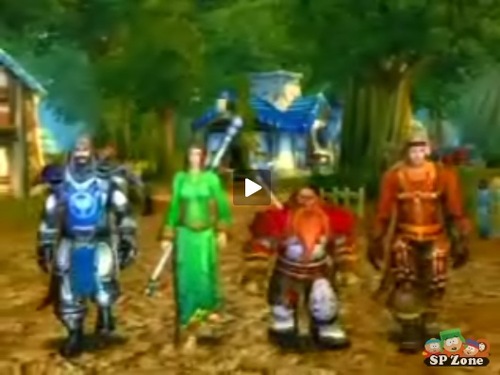
I just read that one of the best pieces of television in a looooooooooong time has just won an Emmy (in Dutch). I've watched it over and over again, and for once this episode remains funny even after seeing it more than 10 times. Strangely enough, I've never found a good version on the Internet to share with you...until now. If you can handle the somewhat lower resolution and the annoying logos flying in and out of the screen in this 'official' online version (is YouTube going to be like this? I hope not!) then enjoy: South Park meets World of Warcraft (be sure to check the full screen button).
Today's NASA Slogan: All Your Space Are Belong To U.S.
Posted on Sunday, September 9, 2007
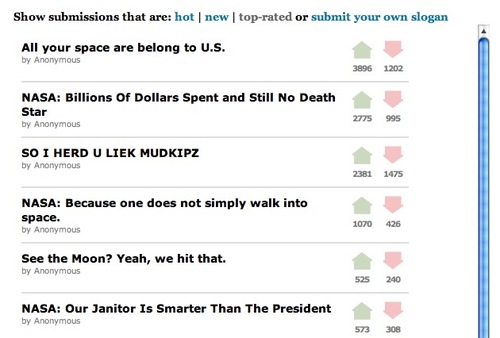
Wired is running a crowdsurfing NASA slogan contest to see if its readers can come up with a better slogan than the recently selected "NASA explores for answers that power our future". Starting out as a gimmicky blogpost (read a long list of proposed-slogans-as-comments here), the large number of entries have moved the contest to a more sophisticated system (the NASA Slogan Reddit Tool!) where people can cast votes on the various entries. Above image shows the top-6 of today, Sunday September 9th 2007.
Sofar, many of the proposed slogans go back to NASA's glorious past, poking fun at present-day achievements. With the CEV vehicle (aka Orion) resembling Apollo all the way down to the parachuted landing (water or land, what does it really matter?), having a slogan referring to the successes of the past seems to me to match NASA's own state of mind (yep, its the the wisdom of crowds allright). In that sense, having a slogan bringing back the glory days of NASA isn't all that far fetched if you ask me...I mean, how inspirational is this graph: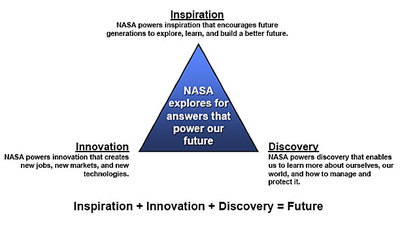
compared to this image: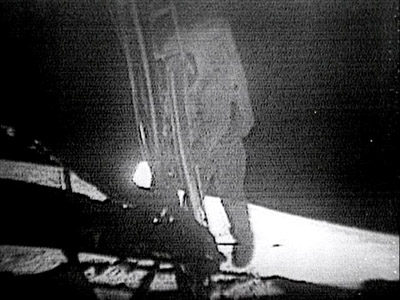
Would be nice to have the WIRED contest run indefinite while NASA's Vision for Space Exploration unfolds, having something like a NASA Slogan Zeitgeist over the coming decades. Btw, if you're interested, some more background information on NASA Strategic Communications can be found in this powerpoint pdf.
Geoweb In The News
Posted on Sunday, September 9, 2007
'The world on Your Desktop' in The Economist, a fair read (with a good introduction over at OgleEarth) plus a first commentary on the article at TechConsumer (both via OgleEarth).
DinnerTV: Microblogging
Posted on Friday, August 31, 2007
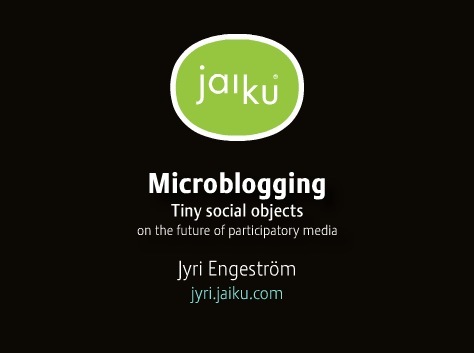
The video (June07, Amsterdam, 49:40) and the corresponding slides.
Banking the Internet
Posted on Friday, August 31, 2007
Google in the economist tells us that Google's rapid ascent and its role in the market more resembles a bank than Microsoft (via), while O'Reilly Radar talks about infovis and similarities between web2.0 and financial markets. In essence, a quick friday afternoon post.
NASA2.0 & OBE
Posted on Saturday, August 25, 2007
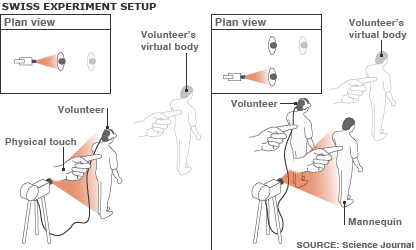
Another good move by NASA: NASA partners with Internet Archive to put space archives online. More over at CNET NEWS. Meanwhile, in Lausanne, a team of researchers recreated an Out-of-Body Experience in the lab...sweet.
User Generated Content Generator, aka a human being
Posted on Monday, August 13, 2007
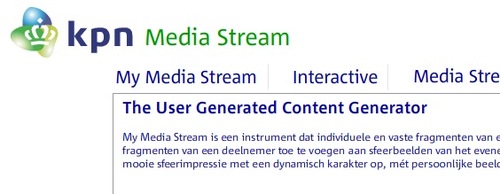
Talking to a friend here in Amsterdam who is in the online video business (MyVidayo), he points me to a website with the term 'User Generated Content Generator' (click My Media Stream)...what is that all about? Recursion? Abstraction? Web3.0? Agents? Meanwhile, Tim O'Reilly posts an insightful list of quotes.
Signs of Singularity: The Floraweb Is Coming
Posted on Friday, August 10, 2007
Are you ready for the Floraweb? Then watch below video ;) (via O'Reilly Radar):
User Generated Jobs
Posted on Wednesday, August 8, 2007
Google Blogoscoped drives home the point of increasing online behaviour in the real world (earlier post) by describing the hypothetical 2030 Google Robot FAQ's. A nice read ;) Meanwhile, in 2007, Google has on offer for you the role of Business Referral Representative.
NASA and Microsoft: Photosynth Exploration
Posted on Monday, August 6, 2007

Just in (and spreading on the Internet like a wildfire, like here, here, here and even here): NASA & Microsoft collaborate by making available a Photosynth environment of the Shuttle launch pad at the Cape. Beautiful job!! (its only viewable on XP SP2 or Vista, but for Mac users there is at least a video to see what they are missing ;)
I remember posting a remark on the Photosynth website once suggesting they'd make a Photosynth environment of all Earth photos taken from space, but I wonder whether that is actually feasible given de lack of depth of these images and the changing weather patterns.
Btw, in case you're interested, here's a 58min GoogleVideo going into some of the details of a tool like Photosynth, except this one is not Photosynth but Photosketch (via).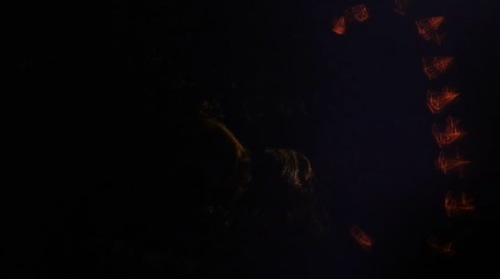
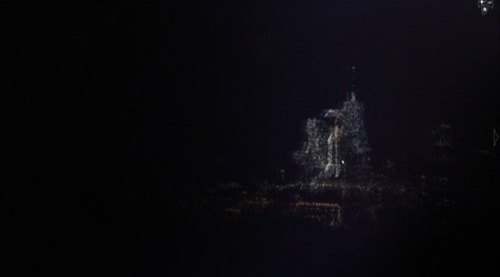
DinnerTV: Vint Cerf on the architecture of the coming Geoweb
Posted on Monday, August 6, 2007
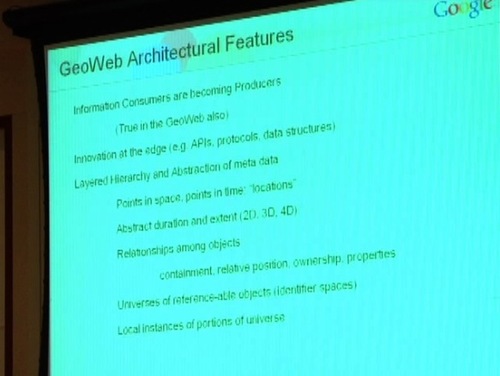
Thought provoking videos have come from the Geoweb2007 conference in Vancouver end of July (via). My shortlist:
Vint Cerf (a must-see)
Jack Dangermond (fresh view for me)
Michael Jones (always interesting)
I was especially struck by the conceptual insights of Vint Cerf where it comes to the architectural design of something as intangible as the virtual Geoweb. And of course his opening remarks to keep the Geoweb conceptually open for the eventual SolarSystemweb are music to my ears ;) Quote of the day comes from Michael Jones:
A map has become a searchable information landscape
Google NASA co-op update
Posted on Wednesday, August 1, 2007
Google Earth CTO Michael Jones gives a brief update on the Google-NASA co-op in this article 'Geospatial Democracy' (30th July 07):
Google and NASA have entered a partnership to make NASA’s information available on the Internet. How is the work progressing?JONES: There are technical challenges and logistical challenges. NASA is a federal agency with federal employees, and just the style of management is a little bit different than Google. It’s not better or worse. NASA is more like a real company, and we’re more like a bunch of graduate students.
We spent a honeymoon period just trying to figure out the tens of thousands of kinds of data that NASA has. Each of their researchers feels their data is the most important data in all of mankind. But which of that data is the most important? So we’ve had a lot of juried, refereed internal NASA panels deciding that historic pictures of the moon might be good, but the temperature of Pluto might not be.
So we’re working on that, and then we were working together on getting the data organized and marshaled so that it could be rolled out on Google Earth.
Data as architecture?
Posted on Saturday, July 28, 2007
Seeing these great images (and these) at DigitalUrban (like the one here below), I find myself thinking the same thing as their post title (Data as architecture) while looking at below image of DELL's website visit statistics in Google Earth (via Google Blog).
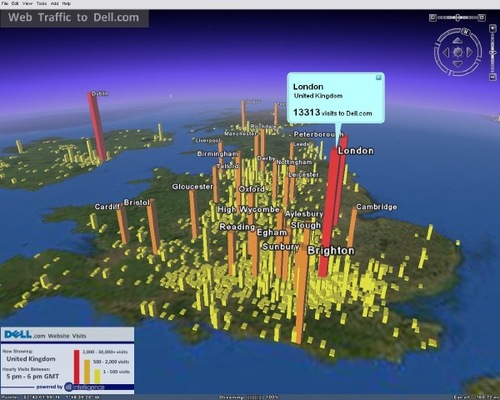
RoadmapHuman
Posted on Saturday, July 28, 2007
From AllPointsBlog comes the following quote:
The biggest threat facing the two competitors [NAVTEQ and Tele Atlas] in the future may be user-generated map content – a mapping equivalent of YouTube, as it were.
Following on below post, and reading these two articles in Newsweek and SignonSanDiego about how TeleAtlas and Navteq go about their business, I can't help but metaphor you in by comparing their on-the-road employees with the likes of GoogleBot, Technorati Searchbot, Tailrank Robot etc. Isn't it funny how we start mimicking behaviour from the virtual world into the real world. I wonder what other behaviour we might see emerging in the real world which has its origin online?
Humans r Sensors
Posted on Saturday, July 28, 2007
OgleEarth has an inspired and inspiring post up today on the coming human sensor web. If you have some time to spare, do check out his post and surf around on the links he provides in this article. You'll be in for an inspired weekend brief. Like always, Google Earth CTO Michael Jones has many interesting things to say on future prospects and more philosophical insights into where it all might be leading. Surfing on OgleEarth's original post, I found this audio recording (28min.) of a recent talk he gave at the Cambridge Conference (15-20 July). Sounds like a geospatial del.icio.us and Digg are in the making. I wonder though if there are any plans to share any future ad revenues Google would be making from all the user generated content and stories submitted by its users, and if so, how that would be done...
While I was away
Posted on Wednesday, July 11, 2007
Been to Transformers earlier this week. Great visuals, poor screenplay. One thing was pretty funny. Where Europe mourned the loss of its Beagle2 lander (it was after all a UK lander on an ESA spacecraft), this movie simply infuses the meme that Beagle2 was actually a NASA lander (a rover at that!) which wasn't lost at all, it just brought back some cosmic top secret imagery of Decepticons rooming the red planet. Who said ESA has a PR problem? Check out above video for some serious transformer action.
What's to come...
Posted on Tuesday, July 10, 2007
Going through my RSS feeds today, I found an interesting quote from Jessy Cowan-Sharp, technical platform manager for the Ames CoLab effort, about NASA's move into virtual worlds such as Second Life:
...virtual worlds are "the seed of something that's going to be one of the major transformational technologies of our species."I couldn't agree more. Read the whole story at SpaceDaily.
Astronaut2.0
Posted on Friday, June 29, 2007
Here is a nice CNET article about the participatory exploration initiatives taking hold at Nasa Ames. Opening statement:
MOUNTAIN VIEW, Calif.--NASA astronauts "twittering" from the moon?
It's not such a far-fetched idea, considering the space agency's current push to partner with Web 2.0 companies like Twitter and save itself from turning into a dinosaur in the Internet age. Some executives at the struggling NASA believe that if the agency can adopt Web technologies like Twitter--a social network for broadcasting thoughts online or via text message--then kids and the general public will be more connected to space exploration and inspired to learn about science.
"How can NASA become hip?" NASA CoLab Project Manager Robert Schingler asked here Tuesday at NASA's Ames Research Center. "For me, it's allowing other individuals (and companies) to participate in the program."
Where does that leave the robotic exploration? I hope these satellites will be keeping a blog anytime soon ;) (earlier post).
Participatory Exploration
Posted on Monday, June 25, 2007
Just in:
- An article about Pete Worden's talk at the ISDC through Second Life
- NASA Ames to Host Summit of Technology and Communications Experts
Google airplane & emergency response 2.0
Posted on Friday, June 15, 2007
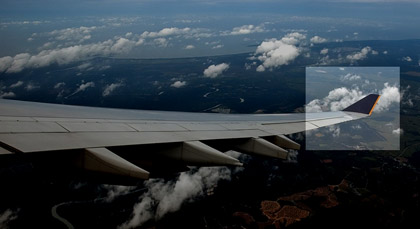
- Brownian Emotion brings the news of an idea put into practice by Google that has been floating around for a while: Google Maps/Earth in airliners. His idea to put cameras on the outside of the plane is an idea I have been thinking of pitching to Virgin once a few years ago. Pretty simple to do...and very cool to have! ;)
- Here is a nice example of a webservice that could do with a "2GoogleEarth API"
Light posting ahead
Posted on Saturday, May 12, 2007
Haven't been very active on this blog lately, which is mainly due to my full focus on the development of my UGO project, making me less susceptible to reading my section of the blogosphere on all the news coming out on a daily basis. I haven't finished my first build yet, so this light posting will likely continue for the coming days/weeks untill I finalise a first UGO app. In the meantime, some interesting developments worth noting:
- Search Engine Land (definitely a good read)
- a joke
- Anil Dash post
- News.com
And of course there is the news of a new WorldWind JAVA release.
Updated blog feed
Posted on Tuesday, May 1, 2007
Mmm, turns out I already had a FeedBurner account with several subscribed readers to this blog (re: earlier post). Strange how things like feeds can get this complicated...;) Anyway, to keep things organised I decided to delete the new account and merge its feed with the already existing one. For those of you who subscribed to the new one in recent weeks, please visit my blog's webpage and (re)-subscribe one more time to the FeedBurner link on the right.
To check if you have the correct feed, the correct FeedBurner account should now have the following URL: http://feeds.feedburner.com/tobedetermined (for Safari on OSX this should read: feed://feeds.feedburner.com/tobedetermined)
Thanx again...
Is that NY burning? Darfur in your face!
Posted on Sunday, April 15, 2007
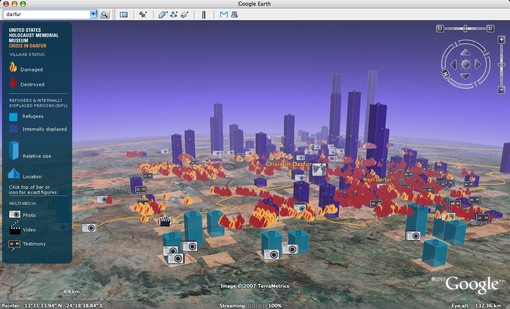
Click to Enlarge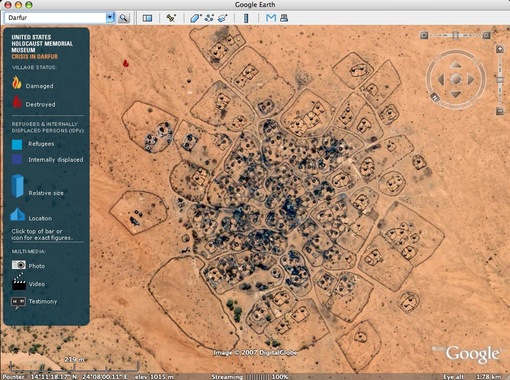
Click to Enlarge
Its been blogged about quite a lot already, nevertheless I have to blog this because putting Google Earth to use for this purpose is really the way to go. The one critique about this particular implementation where I believe there is room for improvement is the way they put the tool to use to harnasse the collective intelligence. Come on, there is a potential 200 million people out there who together can influence the future course of this collectively suppressed genocide. The #1 thing I should do according to the United States Holocaust Memorial Museum is sign up to a Genocide Prevention e-Newsletter...? Hell, that's not gonna make much of a difference for these people over in Africa!? Why not include a button in the Google Earth layer where I can immediately put my money where my mouth is (even if its a single Euro) in order to help the relief effort, or better, help rebuild the particular village I am looking at at this very instant in Google Earth.
And what about the statistics...Google says it will use this particular implementation of a Google Earth layer to learn about the actual visits and use of this tool to educate about these global issues:
Google plans to track whether use of the Darfur site sparks new community and political action on the internet, taking that as a measure of success.
Make them public...lets see what these statistics are!
FeedBurner goes outer space...
Posted on Tuesday, March 27, 2007
Finally...where can I sign up for a feed from the Mars Exploration Rovers or, say, the International Space Station?
A couple of months ago I stumbled upon this ad by FeedBurner which I found kind of intruiging. Thinking about the convergence of user generated content, games like Spore, collective intelligence, NASA teaming up with Google, Google Earth becoming more mainstream, locative media art, blogjects, my project with Jeremy hight 'Floating points', The Internet of Things, advertisements 'in space' and satellites as blogging objects, it seemed they tapped into the right kind of nerve with this particular add. There won't be anybody blogging from Jupiter anytime soon, but considering that satellites have been blogging since the early days of Sputnik (audio), the idea of the blogosphere moving into outer space doesn't strike me as all too crazy (let alone the advertising dollars). The main question that strikes me is: what would somebody something near Jupiter blog about? Any thoughts?
(note: the above flash file was kindly provided to me by FeedBurner after some back and forth communication on my request to host the ad on my blog. Sofar, I haven't been able to make the click-through URL for this particular ad work, so in return I am happy to host their FeedBurner ads URL. Thanks Jessica.)
LBS in mainstream advertising
Posted on Wednesday, March 7, 2007
A new ad campaign for KPN mobile here in Amsterdam gives a (creative) hint at what's coming with Location Based Services (LBS). Tagline (free translation):
KPN MobileatHome : within 100m around your house, mobile calling at the rate of a landline.How about free calling within 100m around the ad display?
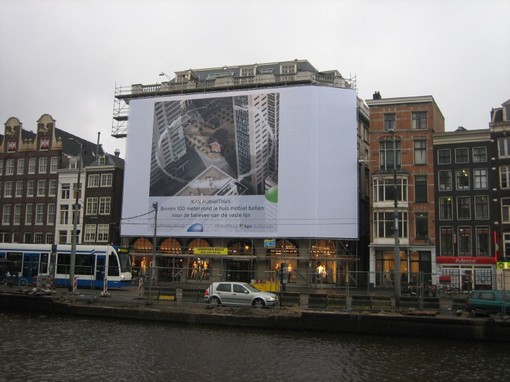
Click to enlarge

Click to enlarge
Europe ahead of itself
Posted on Sunday, March 4, 2007
After Sweden opened the first embassy in Second Life last month, now nu.nl has the story (in Dutch) that the European Commission is studying opening up a European Commission office in Second Life. What's going on here...?
Trying to get back into Second Life over the weekend to have a look at the embassy (amongst other things), I am surprised to learn that I am locked out of my second life because (1) if forgot my password (could only just remember my ackward name Sergey Arkin) and (2) in order to reset my password, I need to give the answer to the captcha ''what is your pet's name'....but I don't even have a pet, let alone that I would remember what I filled in at the time I was making the trial account (usually its something like 'qwerty' or 'qwerty@qwerty.com')...there is clearly a need for some better ID management here. Maybe the European Commission can start by giving each European a unique and personal digital identity while they are at it, instead of just hobby-horsing extending their own little Brussels island into the virtual domain...
But...but, where's the singularity?
Posted on Sunday, March 4, 2007
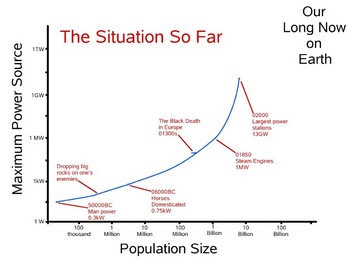
Vernor Vinge recently gave a talk at the Long Now foundation: What if the Singularity does NOT happen.
....It's 2040 and nerds in old-folks homes are wandering around, scratching their heads, and asking plaintively, "But ... but, where's the Singularity?"...As part of his excursion into possible future scenarios for humankind in case the singularity does not happen, he explores the importance of human space flight as a way to secure our long term future. His conclusions sofar:
Humankind's presence in space is essential to long-term human survival.
That is why I urge that we reject any major humans-in-space initiative that does not have the prerequisite goal of much cheaper (at least by a factor of ten) access to space.
Makes sense. Not so sure though if I agree with the idea of human spaceflight as being essential for our future survival, but that doubt is more to do with the notion of 'humans-in-space' compared to that of 'humankind's presence in space'.
On Intelligence
Posted on Sunday, February 18, 2007

Every now and then I gather a list of books I come across while doing research on the Net and order them via Amazon. The latest batch included a book called 'On Intelligence' by Jeff Hawkins, published in autumn 2004 (Amazon). I started to read it a couple of days ago and it completely captured my imagination. Finished it in 3 reads. If you are interested in state-of-the-art thinking on how the brain conjures up something like intelligence, and how this could potentially be implemented in machines, this is it.
Some of the most thought provoking points for me stem from his discussion on the potential of an Artificial Intelligence (AI) intelligent machine, or HTM (Hierarchical Temporal Memory) as he calls his model (.ppt), to make sense of the world through some as yet undefined exotic senses. For example, if he is right that the neocortex basically works on patterns, an intelligent machine based on HTM can learn to make sense of (and predict) global weather patterns using as exotic sense a widely distributed sensor web. Basically, any pattern can be used in this sense, be it Google user statistics, stock market fluctuations, satellites studying Solar Weather, genetic sequencing, hell, even the web itself is probably one big pattern if you have the right senses for it...we could be in for some pretty unexpected extensions of our reality, if we know how to translate them back to our human senses that is...
Doing some further background reading, I came across a couple of interesting video presentations by Jeff on his theory, potential applications and his future plans. In addition, I found this remarkably recent (feb '07) Business2.0 article on his current whereabouts at Numenta, the for-profit company he spun off from the Redwood Center for Theoretical Neuroscience to implement the model he described in his book 2 years ago. And here is a recent Science article about the same topic (Oct. '06).
- Jeff Hawkins presentation at the 2005 MIT Emerging Technologies conference (48 min.)
- Jeff Hawkins presentation 'How the cortex works' (Sep. '05, 54 min.)
- Jeff Hawkins presentation at IBM Almaden Institute (May '06, 64 min.)
- Business2.0 blogpost with brief video interview
The Space Economy
Posted on Friday, February 9, 2007
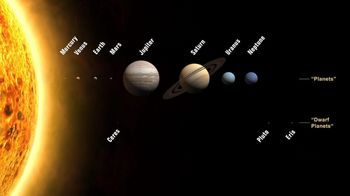
Click to enlarge
How to market a +30 year product/programme like the US Vision for Space Exploration (VSE)? Luckily for us some folks over at NASA are thinking about it:
“As I see it, questions about the Vision boil down to whether we want to incorporate the Solar System in our economic sphere, or not. …The ultimate goal is not to impress others, or merely to explore our planetary system, but to use accessible space for the benefit of humankind.”
Dr. John Marburger
The President’s Science Advisor
Speech to the 44th Robert H. Goddard Memorial Symposium
March 15, 2006
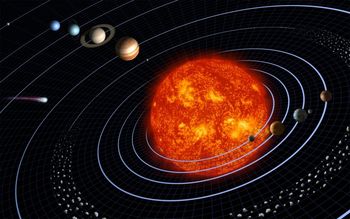
Click to enlarge
Google is coming to town
Posted on Friday, February 9, 2007

Well, not exactly Amsterdam, but the Netherlands at least: Google opens datacenter at Eemshaven (near Groningen) (in Dutch).
Bill Hicks on recursion by marketing
Posted on Friday, February 9, 2007
Recursion (as discussed in this presentation by Kevin Kelly) according to Bill Hicks, taken from this wikipedia entry on him (youtube):
By the way, if anyone here is in advertising or marketing, kill yourself.
Just a little thought. I'm just trying to plant seeds. Maybe one day, they'll take root. I don't know. You try. You do what you can. Kill yourself.
Seriously, though. If you are, do. No, really. There's no rationalisation for what you do, and you are Satan's little helpers, okay? Kill yourself. Seriously. You are the ruiner of all things good, seriously. No, this is not a joke, if you're going: "There's going to be a joke coming." There's no fucking joke coming. You are Satan's spawn, filling the world with bile and garbage. You are fucked, and you are fucking us. Kill yourself, it's the only way to save your fucking soul. Kill yourself. Planting seeds.
I know all the marketing people are going: "He's doing a joke." There's no joke here whatsoever. Suck a tail-pipe, fucking hang yourself, borrow a gun from a Yank friend – I don't care how you do it. Rid the world of your evil fucking machinations. I know what all the marketing people are thinking right now too. "Oh, you know what Bill's doing? He's going for that anti-marketing dollar. That's a good market, he's very smart." Oh man. I am not doing that, you fucking evil scumbags! "Oh, you know what Bill's doing now? He's going for the righteous indignation dollar. That's a big dollar. Lot of people are feeling that indignation, we've done research. Huge market. He's doing a good thing." God damn it, I'm not doing that, you scumbags. Quit putting a goddamn dollar sign on every fucking thing on this planet! "Oh, the anger dollar. Huge. Huge in times of recession. Giant market, Bill's very bright to do that." God, I'm just caught in a fucking web. "Oh, the trapped dollar. Big dollar, huge dollar. Good market, look at our research. We see that many people feel trapped. If we play to that and then separate them into the trapped dollar …"
The future is process, not a destination
Bruce Sterling
Everything is ultimately becoming information technology
Ray Kurzweil
Data is the Intel inside
Tim O'Reilly
There is only one machine and the web is its OS
Kevin Kelly
The medium is the message
Marshall McLuhan
